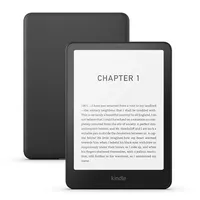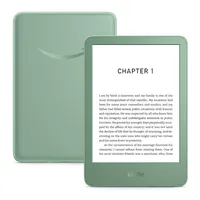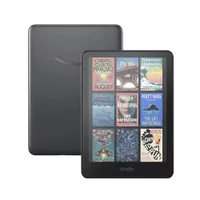Best Kindles: which Amazon e-reader is right for you?
See how these e-readers stack up against each other in our expert tests

David Nield
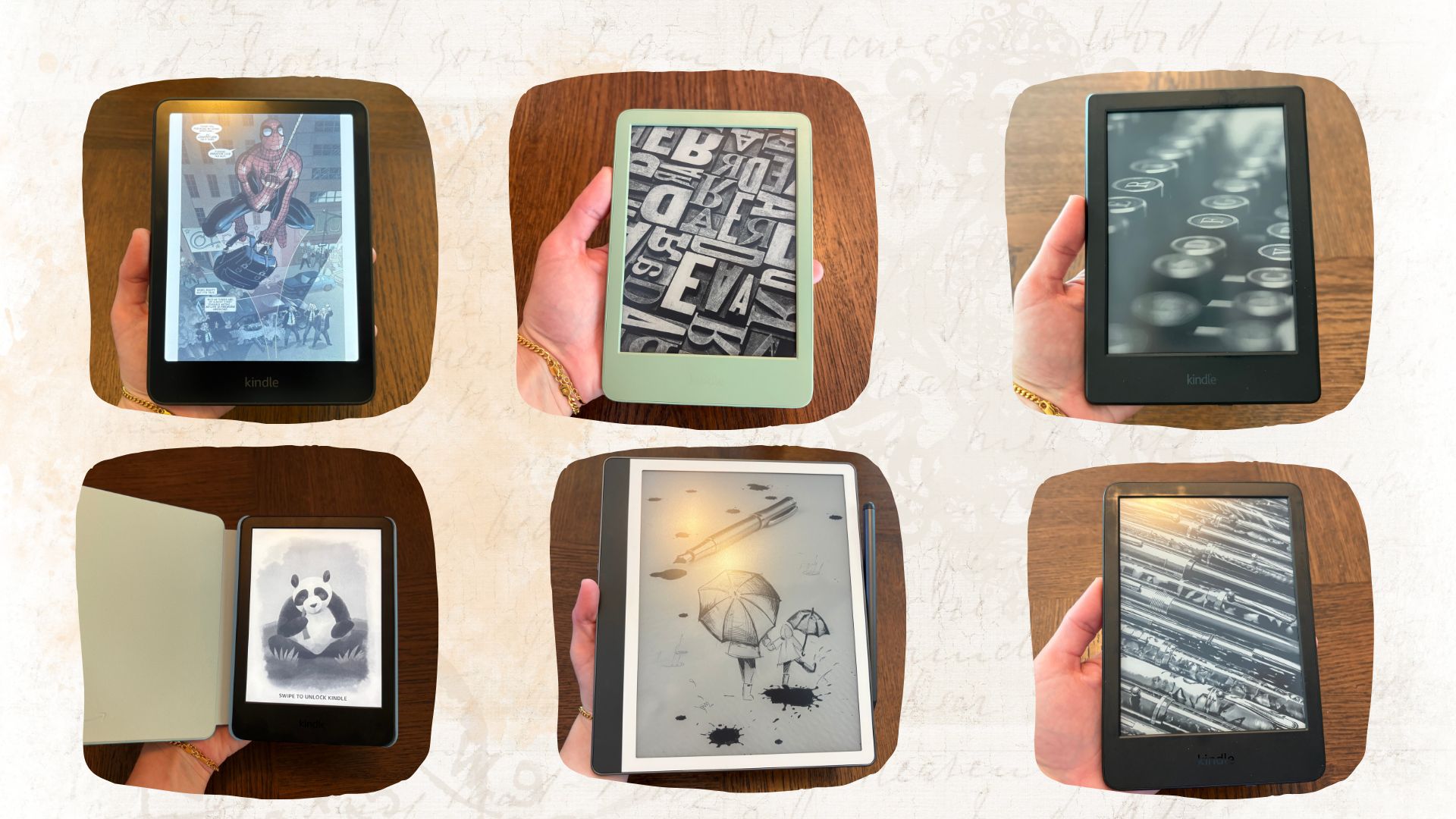
29/11/2025: We have just published a review of Kindle's more affordable version of the Kindle Colorsoft (the Signature is the older, more expensive colour model). It's on sale and competing for a spot in this guide. Watch this space...
Whether you’re a page-turner, a holiday reader, or someone who has a book in their bag at all times, investing in one of the best Kindles can seriously upgrade your reading game. These slim e-readers are a lightweight, paper-free alternative to carrying books around. And with access to millions of titles at your fingertips, they’re one of the easiest ways to read more without taking up space. But with multiple models to choose from, deciding which Kindle is best can take a little thought.
That’s where I come in. I’ve been using Kindles since 2012 and have tested every Kindle currently available (as well as their Kobo rivals), so I can help you figure out which one suits your needs, whether you’re a night reader, a magazine browser, or a regular commuter. I’ve also covered the most genuinely useful Kindle accessories as well as the best Kindle covers to keep your device safe and stylish, especially if you’re popping it in your handbag or taking it on a trip. Because once you’ve picked the right Kindle, you’ll want to protect it properly.
It’s also worth thinking about how you plan to use your Kindle. If you’re a voracious reader, for instance, Kindle Unlimited might be a smart add-on. It’s a subscription service that gives you access to over a million books, audiobooks, and magazines, ideal if you don’t want to keep buying new titles or love discovering new authors. Pair that with a long battery life and an e-ink screen that works beautifully in bright sunlight, and you’re all set.
Today's best deals
It's the Black Friday Weekend, which means that Kindle sales are at their most impressive. I've seen the lowest price ever for the matcha Kindle and some other seriously good savings, all listed below:
This is Amazon's most popular Kindle model. I call it the Goldilocks of eReaders, not too expensive, but still premium. Realistically like paper, but with the benefits of a screen. It's the perfect all-rounder.
Brilliantly basic, this is Kindle's most affordable model. It's compact, fits inside even the smallest handbag, and you can now pick it up in a beautiful matcha colour. It's a pretty Kindle.
This is the true luxury experience: the Kindle in full colour. If you read magazines, cookbooks, and non-fiction, you'll enjoy the vivid display this offers. The screen is sharp and it feels luxurious. A dream come true.
The Quick List
If you want to skim and scan the best Kindles on the market, here's a quick synopsis of what our experts thought of each model and who it would suit. There's more detail further down the page.
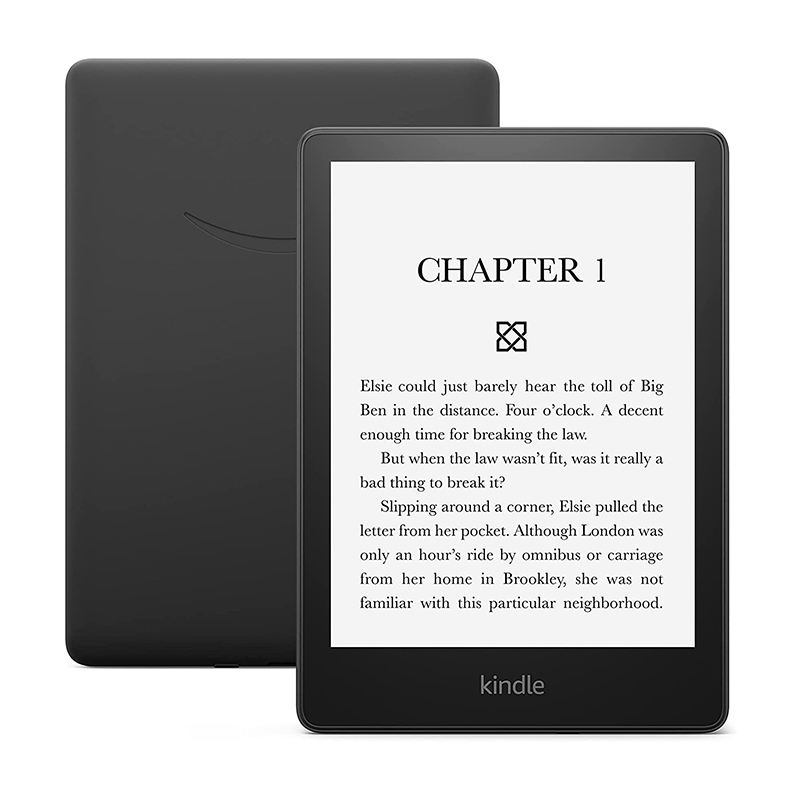
Best overall
This will convert even the most committed bookworms to e-reading. The warm colours and paper-texture page are reminiscent of classic books. It's light, portable, and waterproof too.
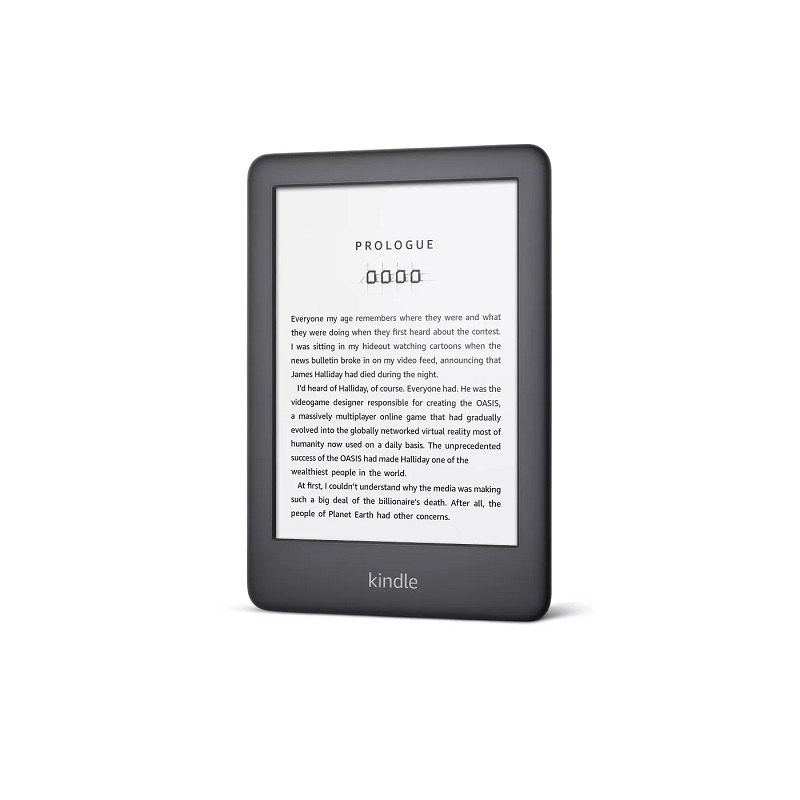
Most compact
Sometimes, you can't beat a basic. If you want a slim tablet that will fit in your handbag or rucksack, this is the best one you can buy. It has 16GB of storage (enough for thousands of books), but the screen is small, so pack your reading glasses or enlarge the text.
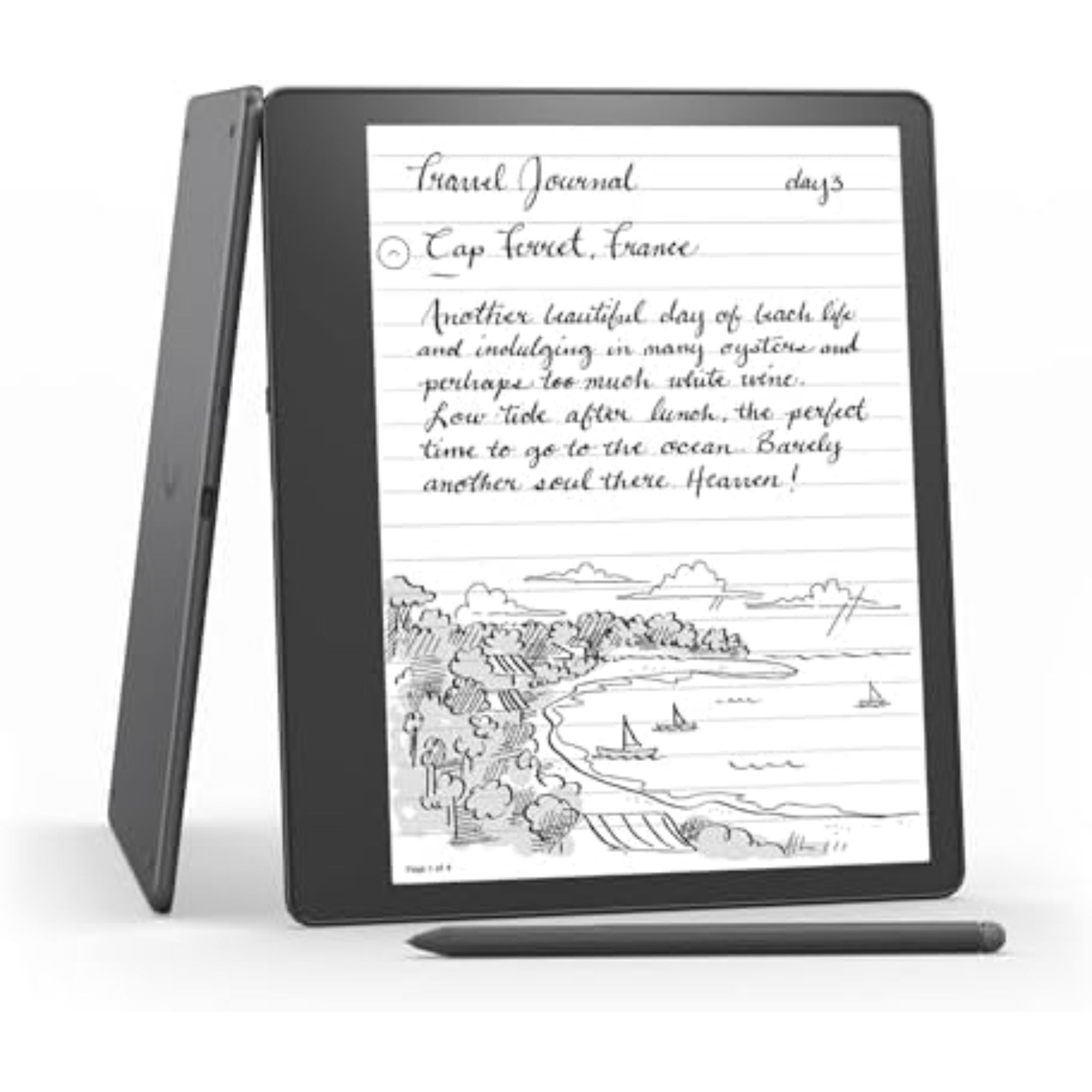
Best tablet
For my fellow page-side scribblers, the Scribe will let you drawer, underline and take notes as you read. This premium eReader will cover the functions of your tablet and your bookshelf.
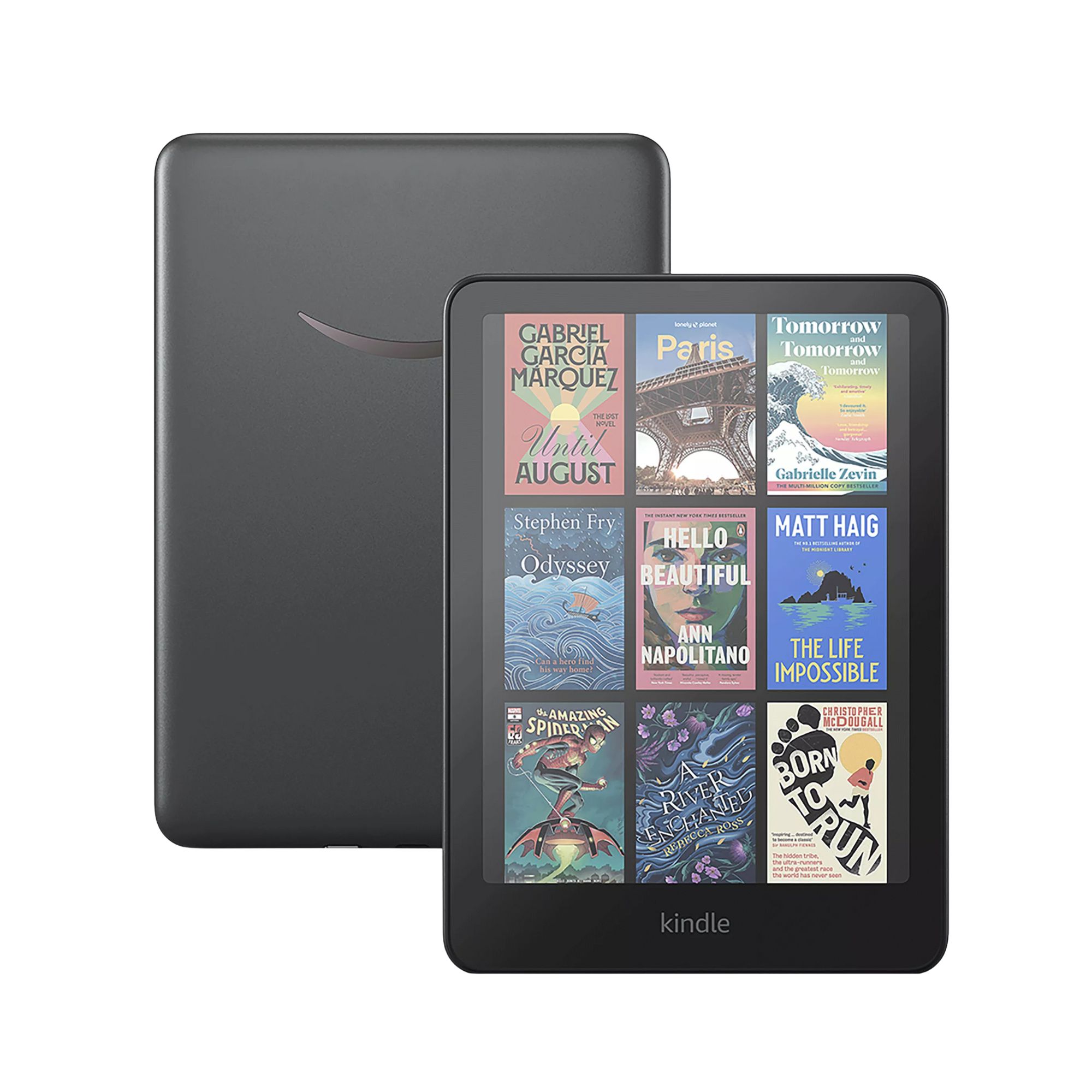
Most premium
If you like your non-fiction books (be it cook books, magazines, or travel-guides) this is the way to read life in colour. The screen is vivid and the build-quality is fantastic. This really is the luxury experience.
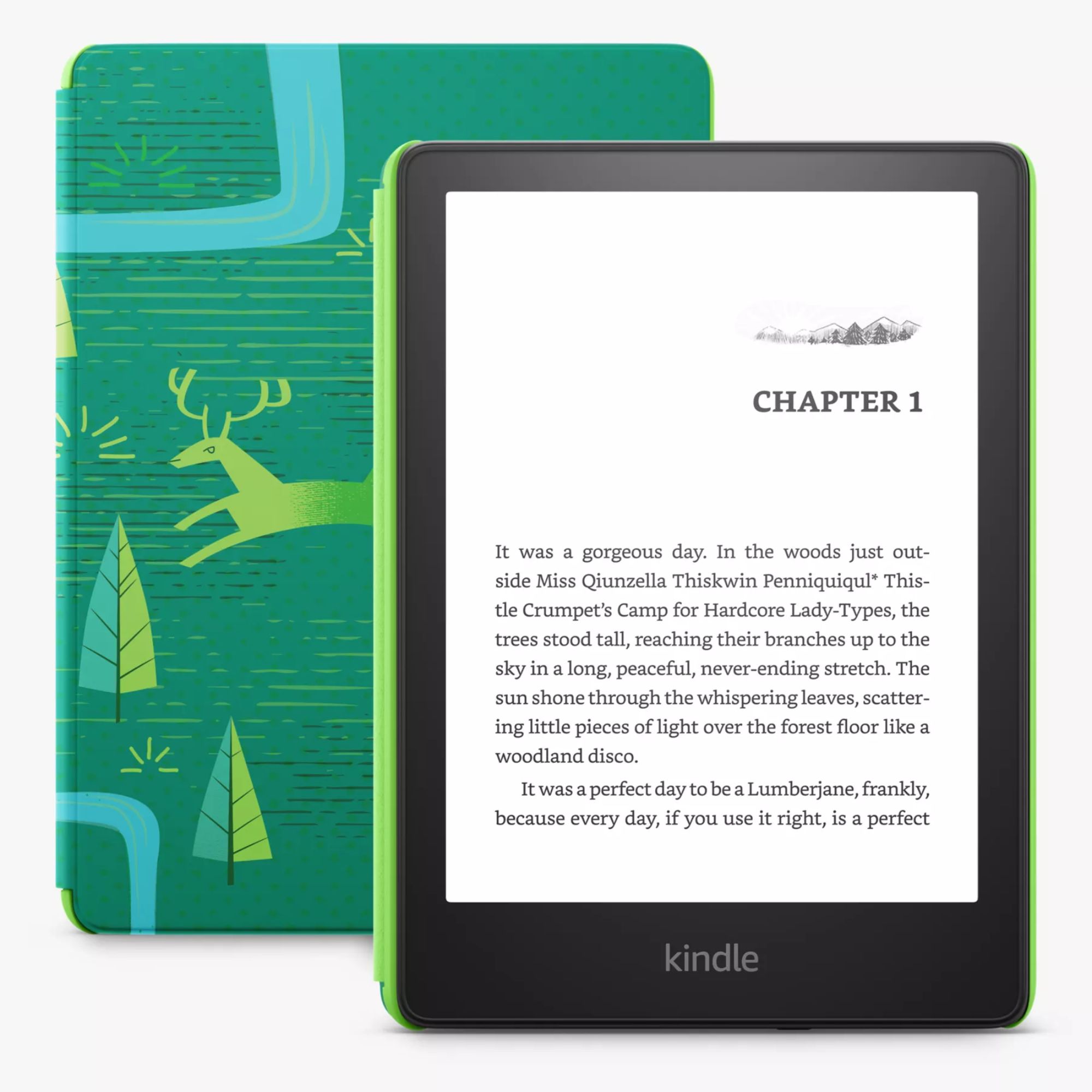
Best for children
The clue is in the name of this one. It's robust enough for little accidents and comes with a two-year warranty. Plus, you'll get a free subscription to thousands of children's books.
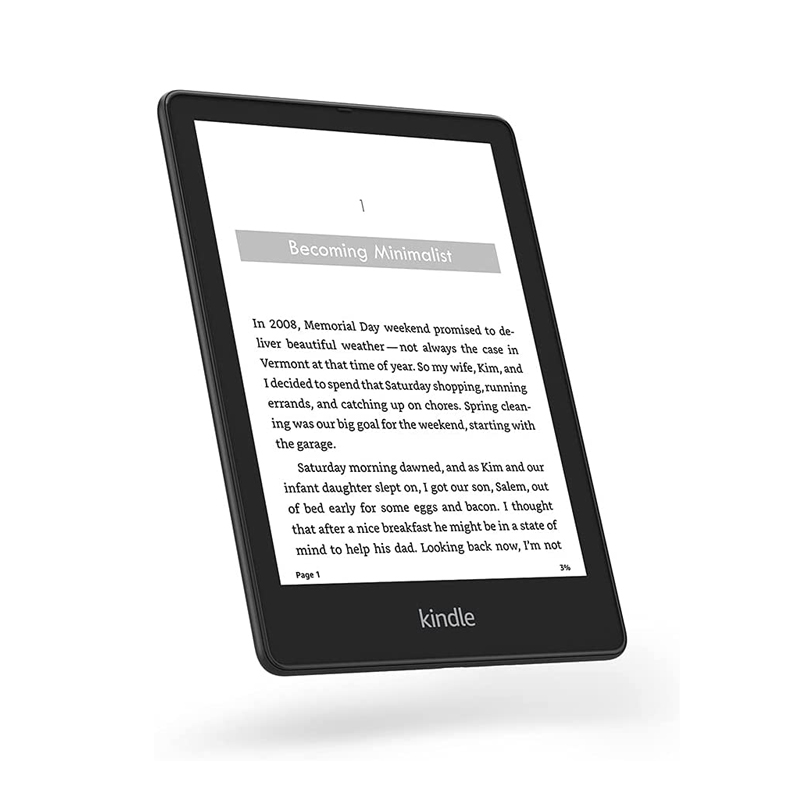
Best for holidays
For another £40, the Signature Edition of Kindle's Paperwhite gives another 8GB of memory, wireless charging, no ads, and an automatically adjusting backlight. It's a stress-free upgrade, perfect for treating yourself.
The best Kindles of 2025, tried and tested by our bookworms
The best Kindle overall

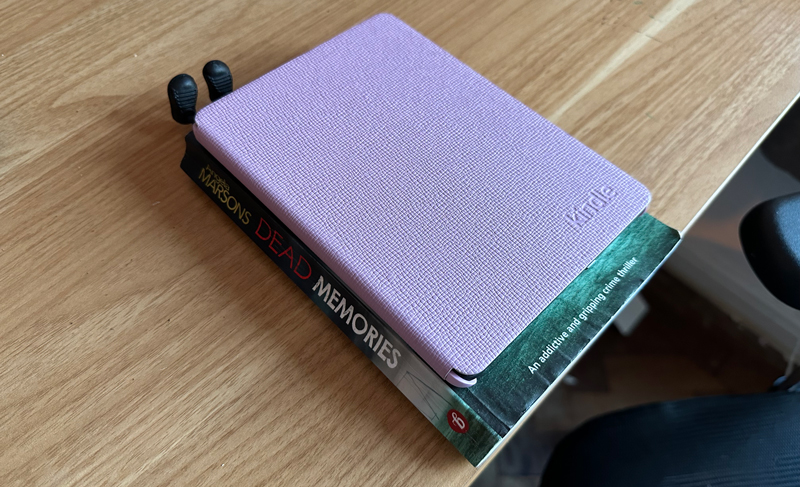
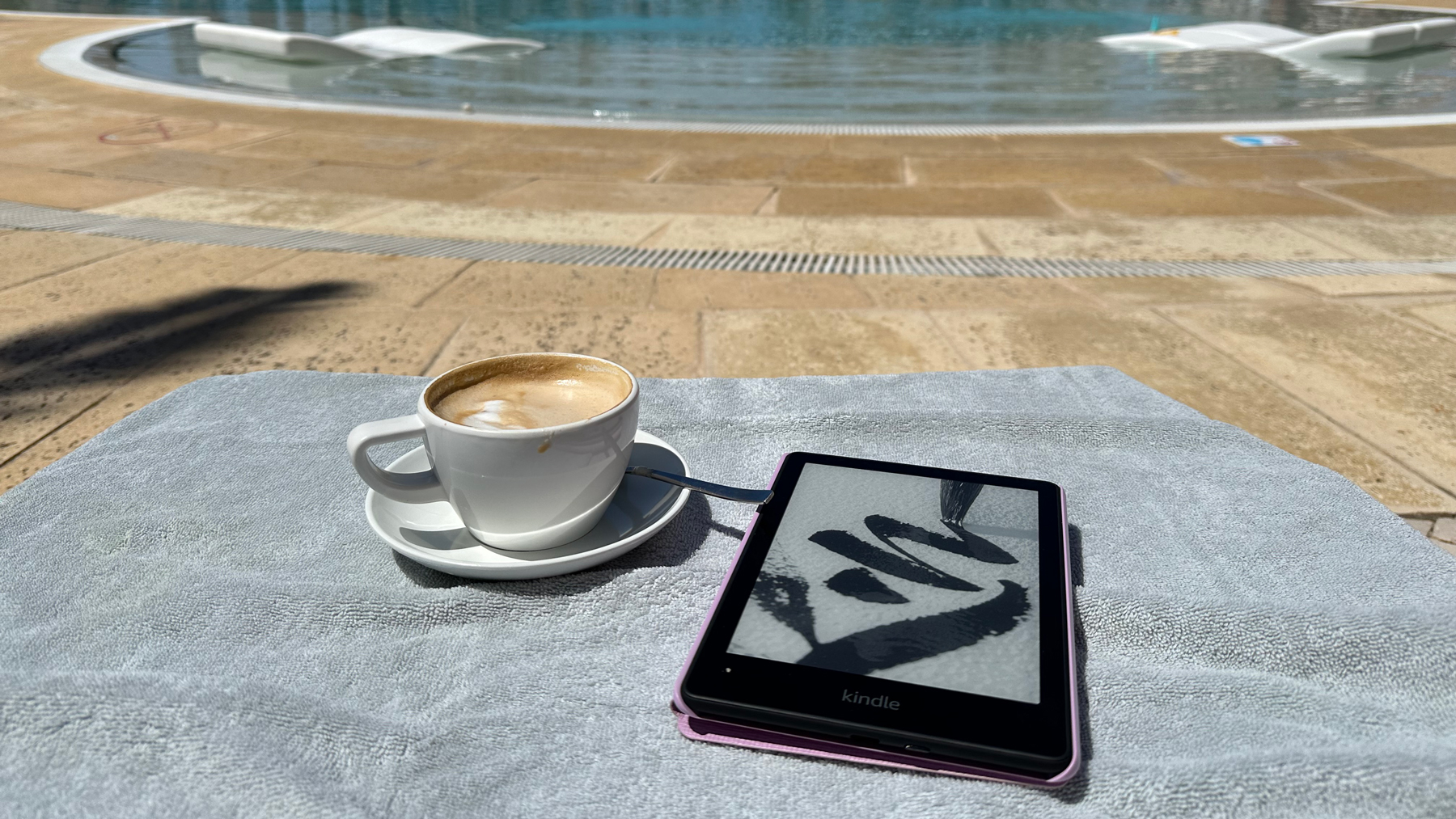
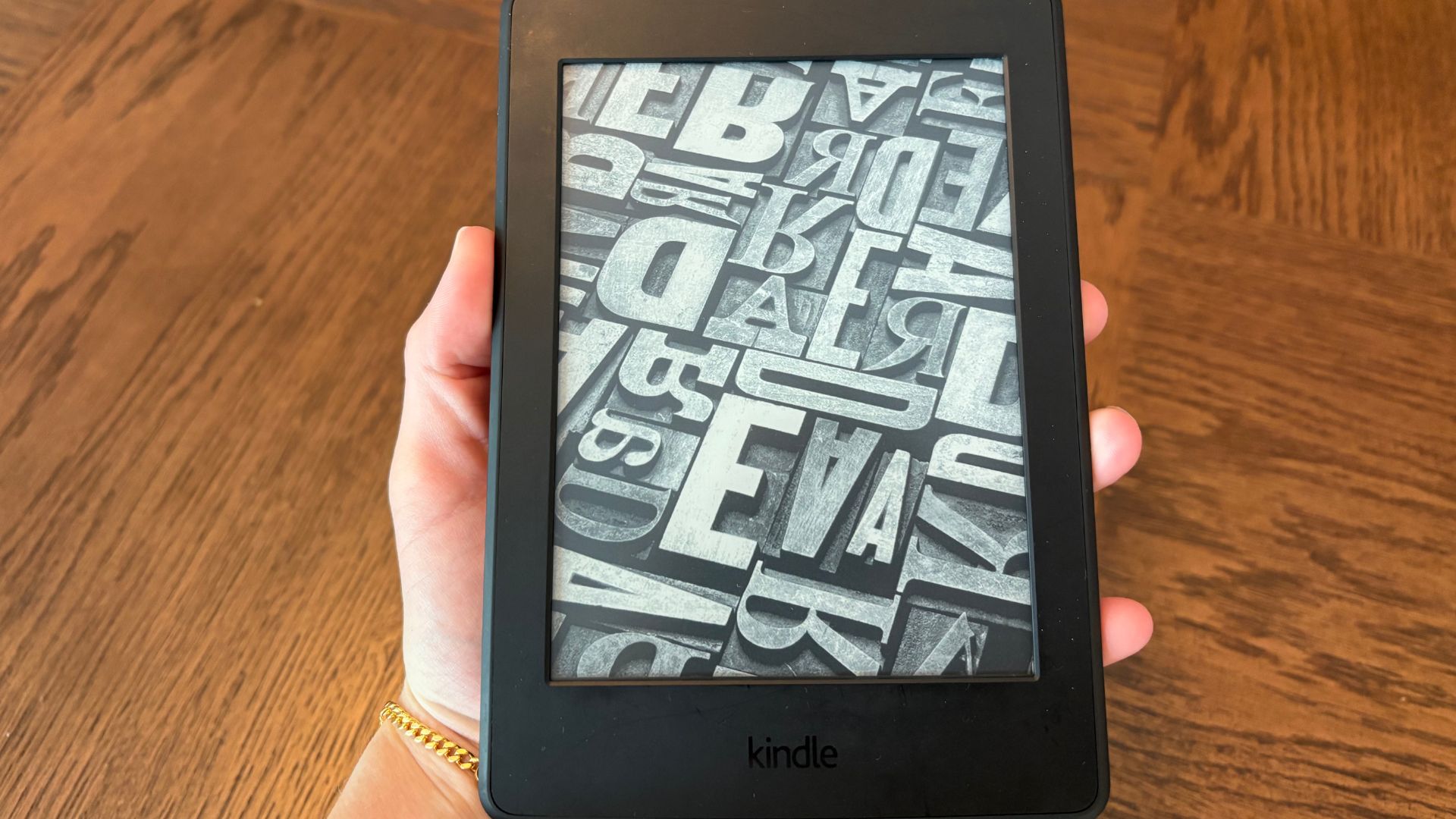
Specifications
Reasons to buy
Reasons to avoid
The Kindle Paperwhite is one of Kindle's core offerings. I always call it the Goldilocks of the Kindles; the 6.8-inch screen is not too big, nor is it too small. At £179, it's not too expensive, nor is it the cheapest and flimsiest model. It also comes with a 10-week battery life, waterproof features, and enough storage for thousands of books.
Kindle are now on the 12th generation of the Paperwhite, constantly innovating its ever-popular model. As the name suggests, the screen was created to look like paper. This means that it's glare-free, visually sharp (at 300 pixels per inch), and the screen sits flush with the front display, rather than sinking back. The clever backlights automatically adjust their brightness depending on whether you're reading outside in the sun or inside under the covers. Plus, you can make the screen warmer closer to bedtime, to reduce glare on your eyes.
Whilst older Paperwhites had a small 6-inch screen, Amazon has added another 0.8 inches to the screen. It still fits into the palm of my hand when I'm lying in bed, except now I can increase the text size and still fit more onto one screen. The latest upgrades also give you access to more of a range of storage options (8 GB, 16 GB and 32 GB) as well as a range of colourways, from black, to plum, sage, and twilight blue.
In comparisons between the Kindle vs Kindle Paperwhite, you'll note that this is a little more expensive than a basic model. However, for plenty of readers, it's worth the extra money. For starters, the Paperwhite can be submerged in up to two metres of water for up to an hour, so if you read in the bath or by the pool, you can really properly relax.
You can find out more in Kerrie's full Amazon Kindle Paperwhite review.
The most compact Kindle
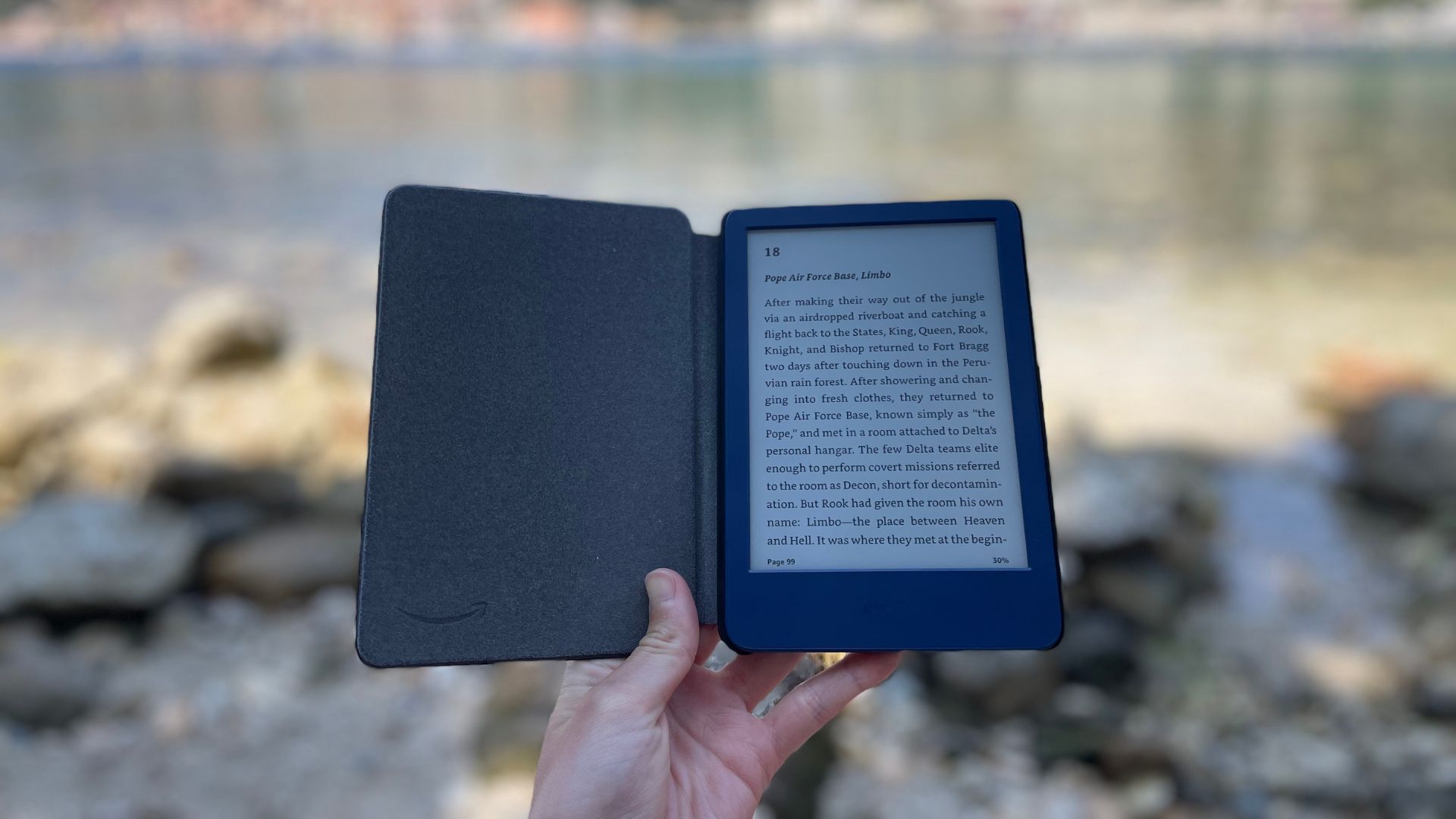
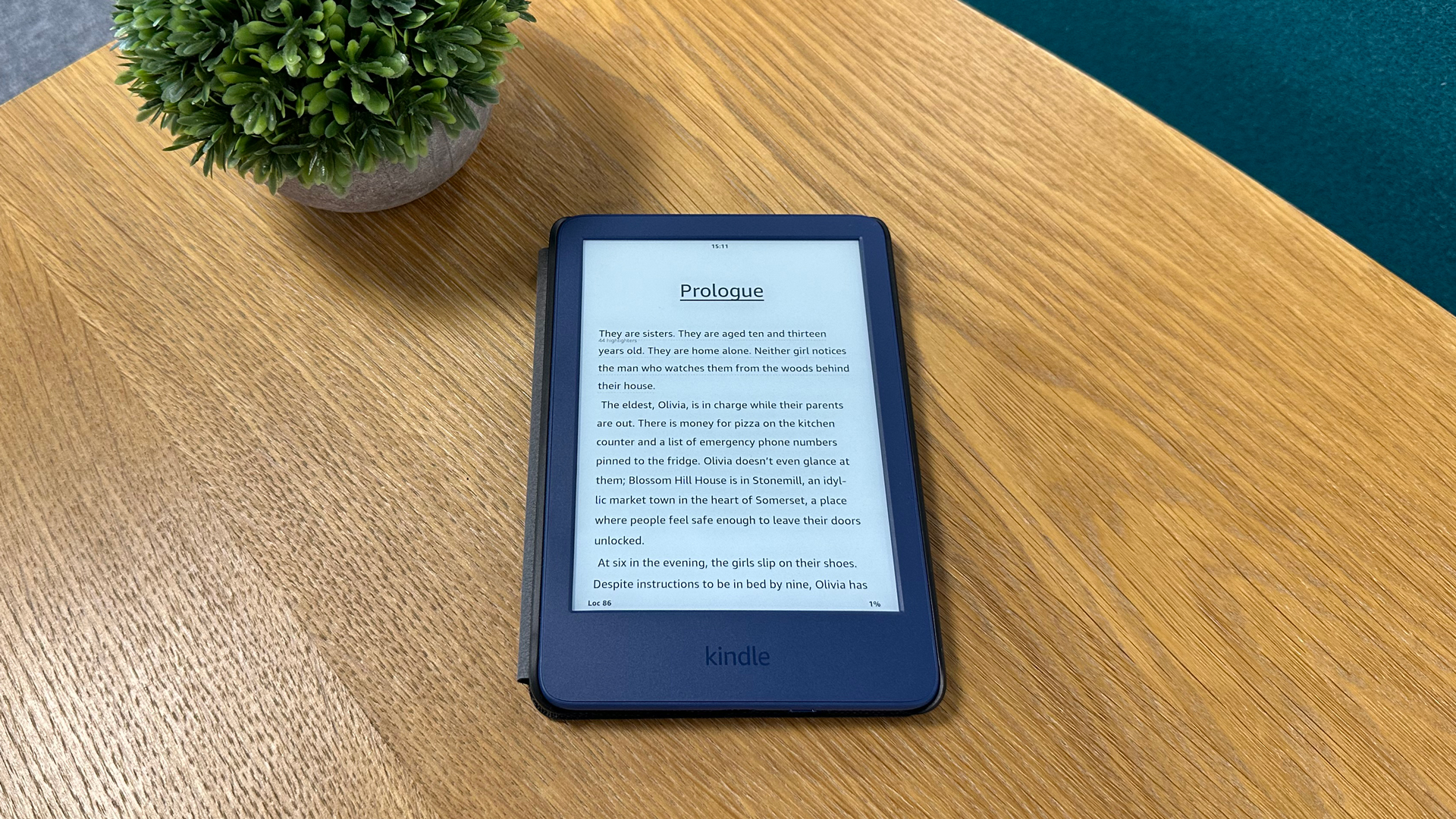
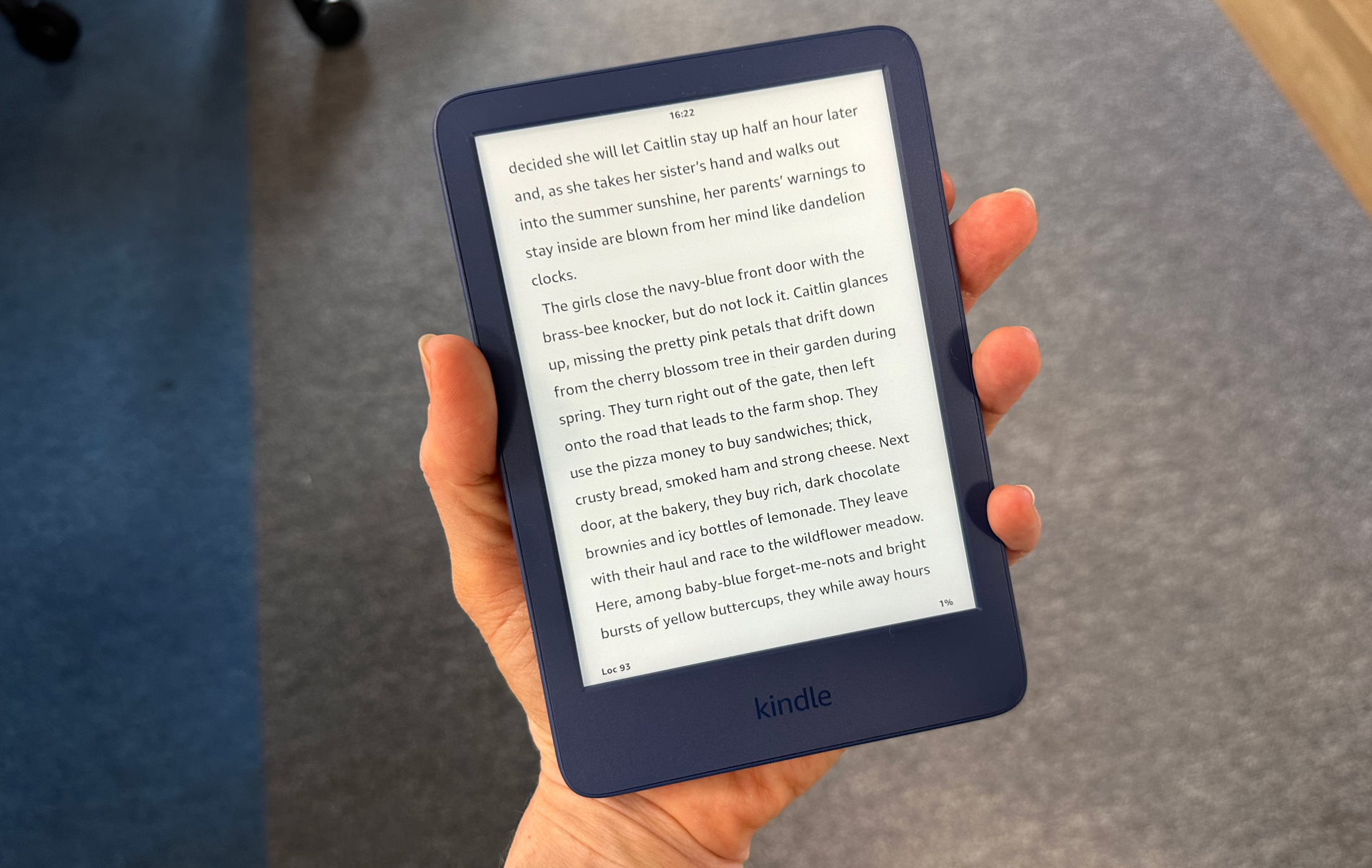
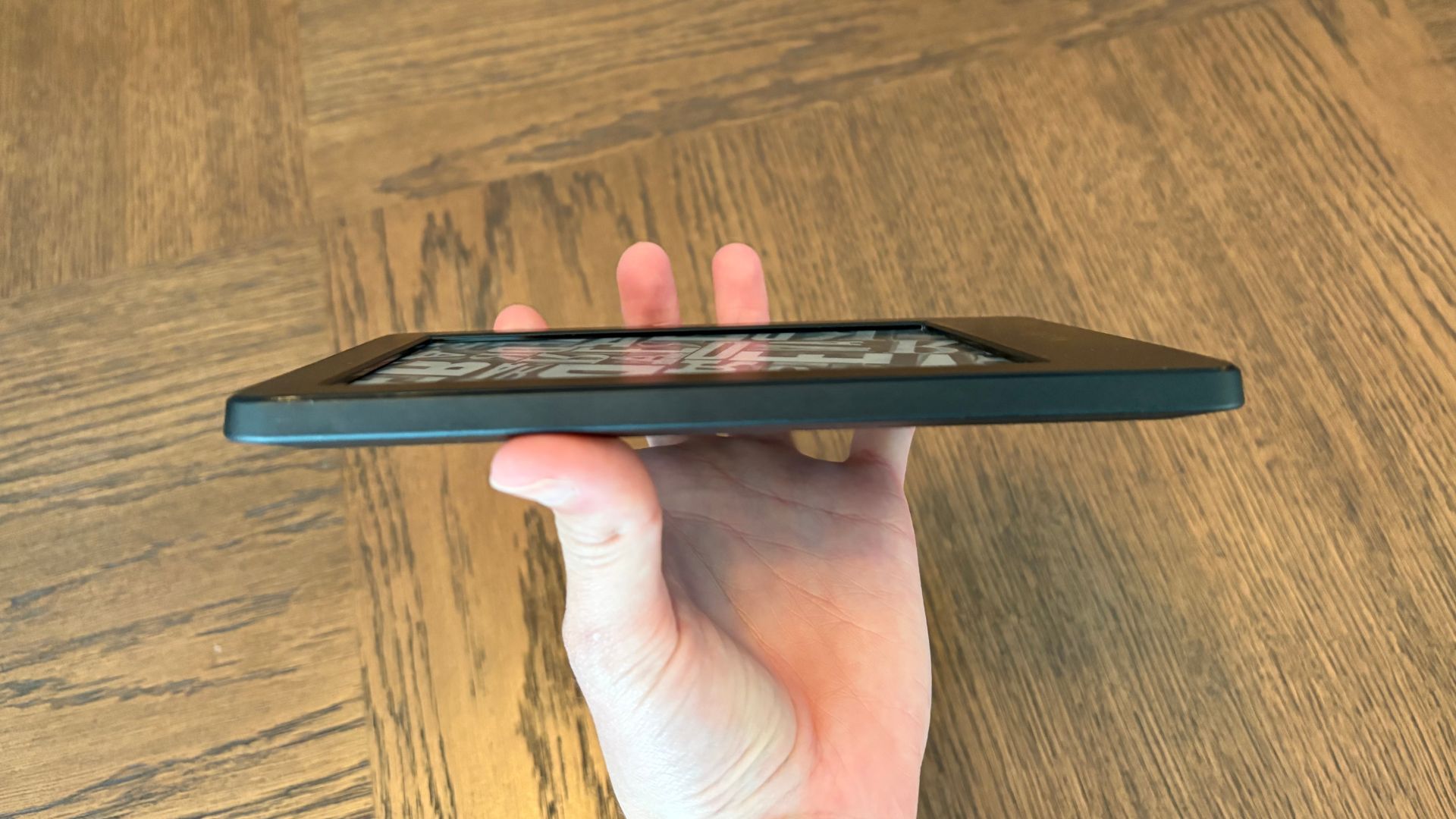
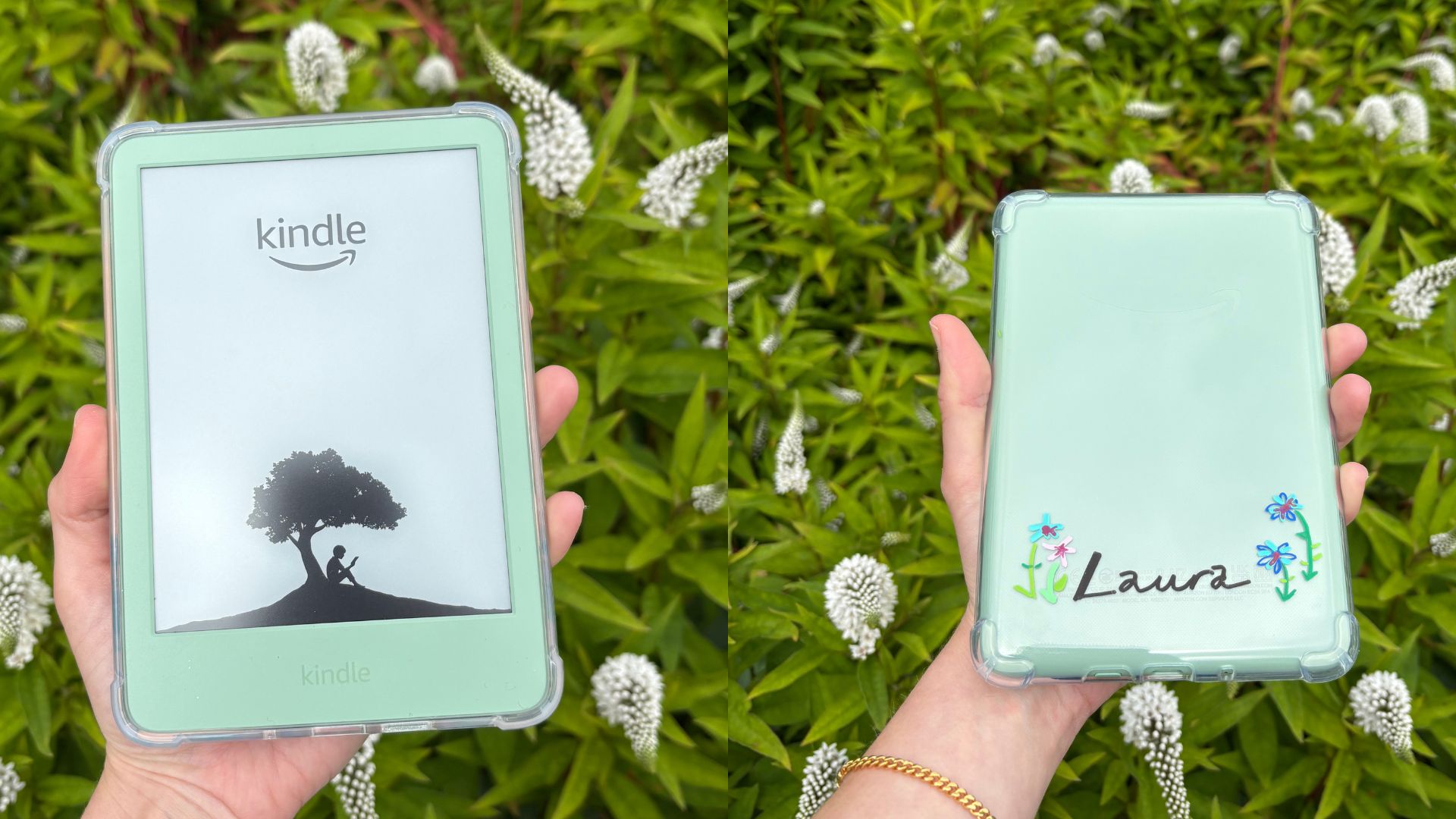
2. Amazon Kindle
Our expert review:
Specifications
Reasons to buy
Reasons to avoid
If you want a no-fuss eReader that still feels stylish and thoughtful, the Amazon Kindle is your go-to. It covers all the essentials that make Kindles so popular: crisp text, long battery life, and lightweight portability. All the while it keeps things charmingly simple. And with the new colour options (Matcha, anyone?), even the “basic” Kindle feels a little bit special.
In my family of seven, three of us own this model and not just because it’s the most affordable Kindle you can buy. At under £100, it’s brilliant value, and the more you use it, the more you notice the clever little touches. The built-in front light means you can read day or night, the glare-free screen works beautifully even in sunlight, and if you connect Bluetooth headphones or a speaker, it supports audiobooks through Audible too.
That said, it’s not without a few compromises. It’s the only Kindle in this guide that isn’t waterproof, so I wouldn’t risk it by the pool or in the bath. The screen is also smaller at six inches, so you may need to bump up the font size (or pop on your readers). And while the backlight works well, it doesn’t offer the warmth or subtlety of the Paperwhite’s display.
But honestly, for everyday reading, it ticks all the right boxes. It’s light, reliable, and easy to slip into your bag, which explains why it’s so loved in my family. A brilliant little Kindle that proves simple can still be smart.
You can find out more in Kerrie's full Amazon Kindle (2022) review
The best Kindle tablet
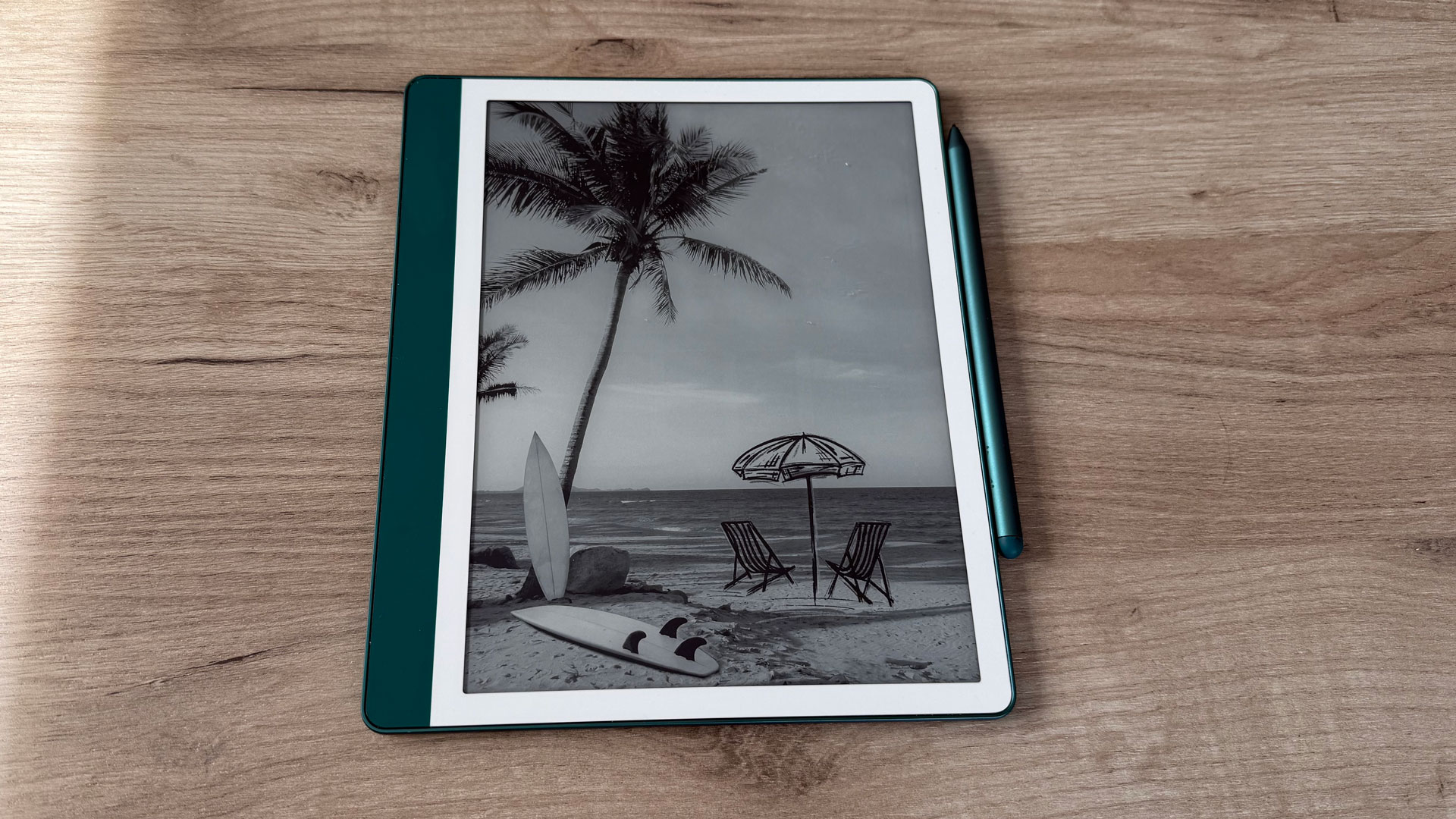
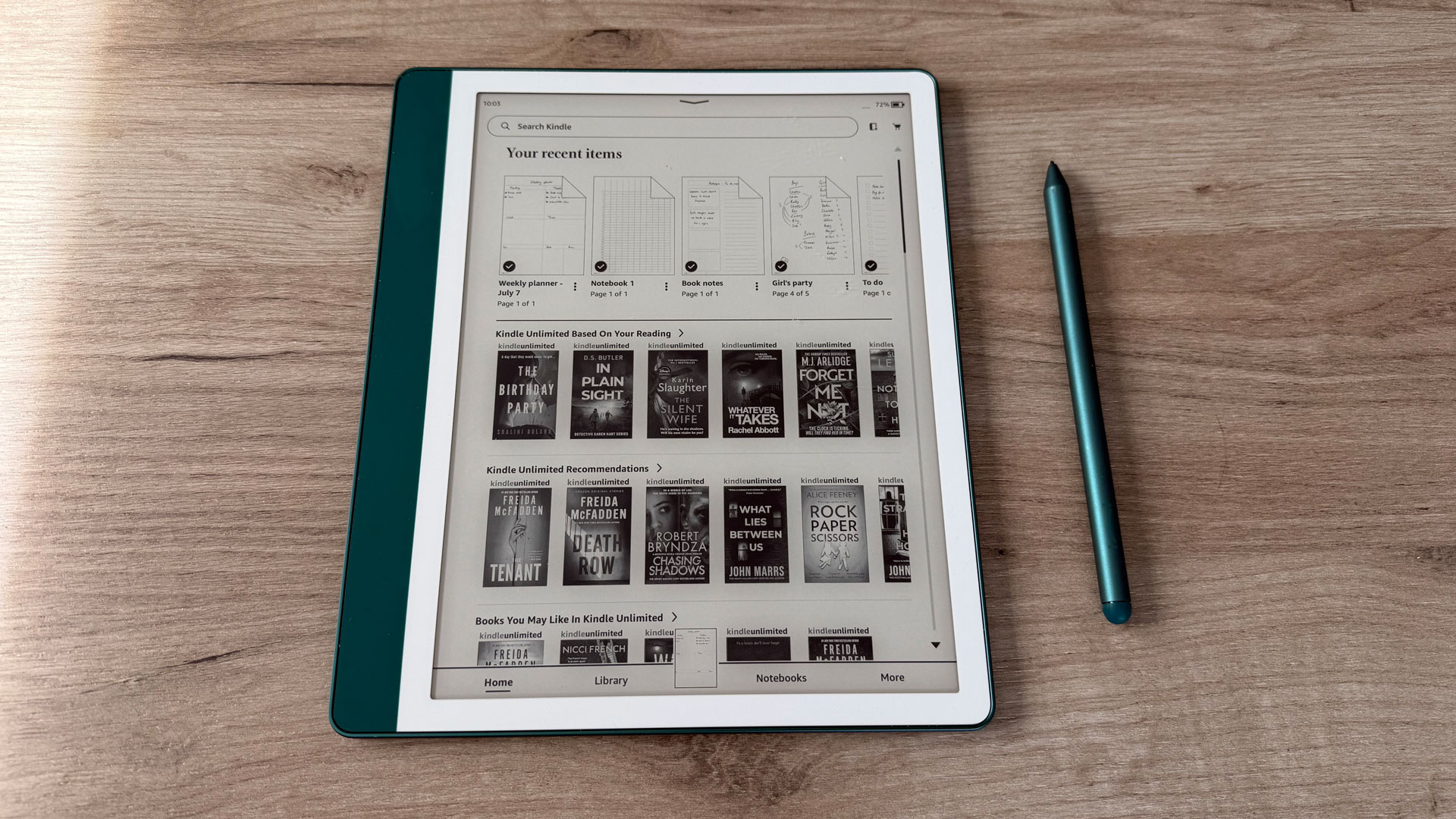
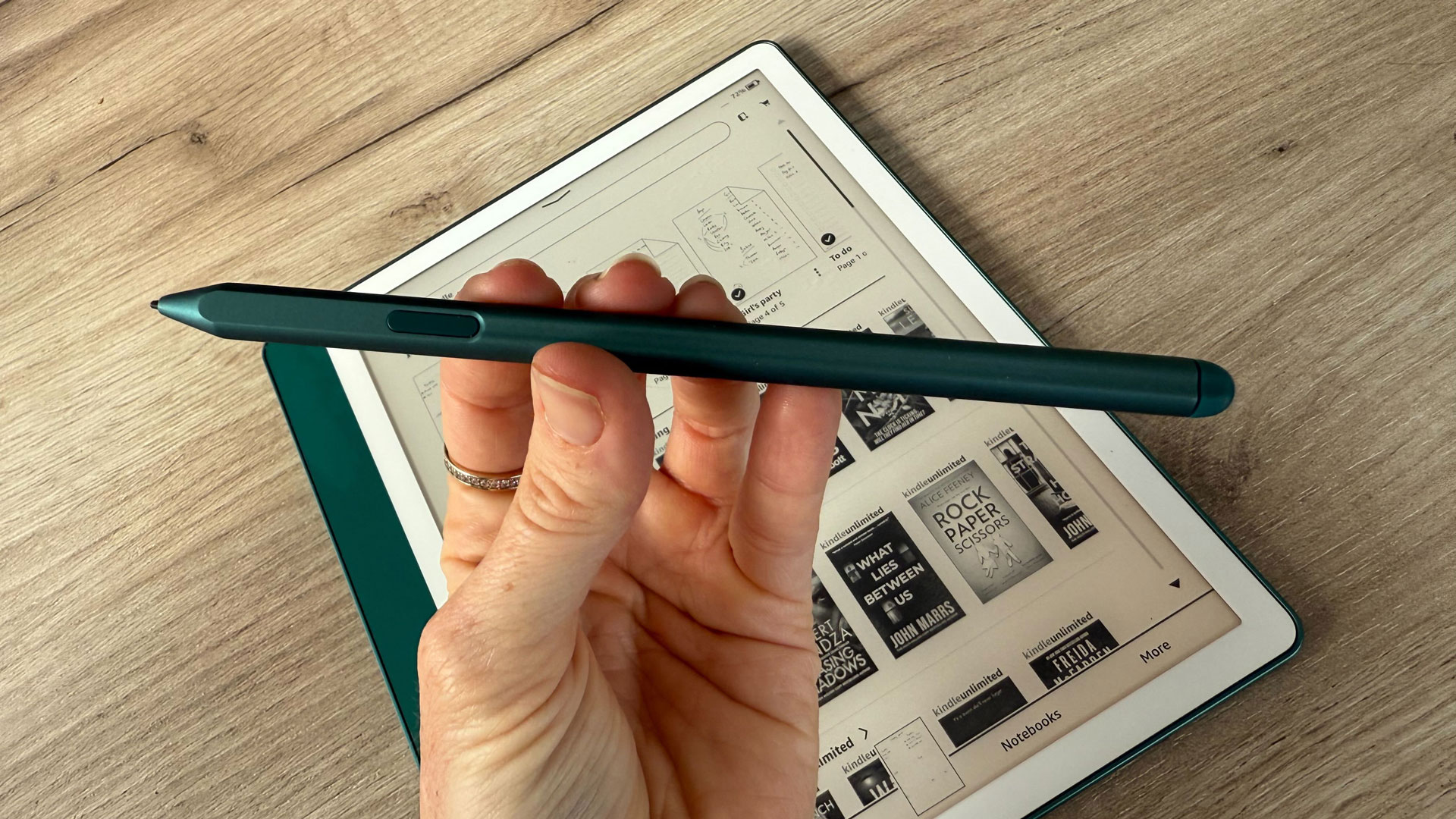
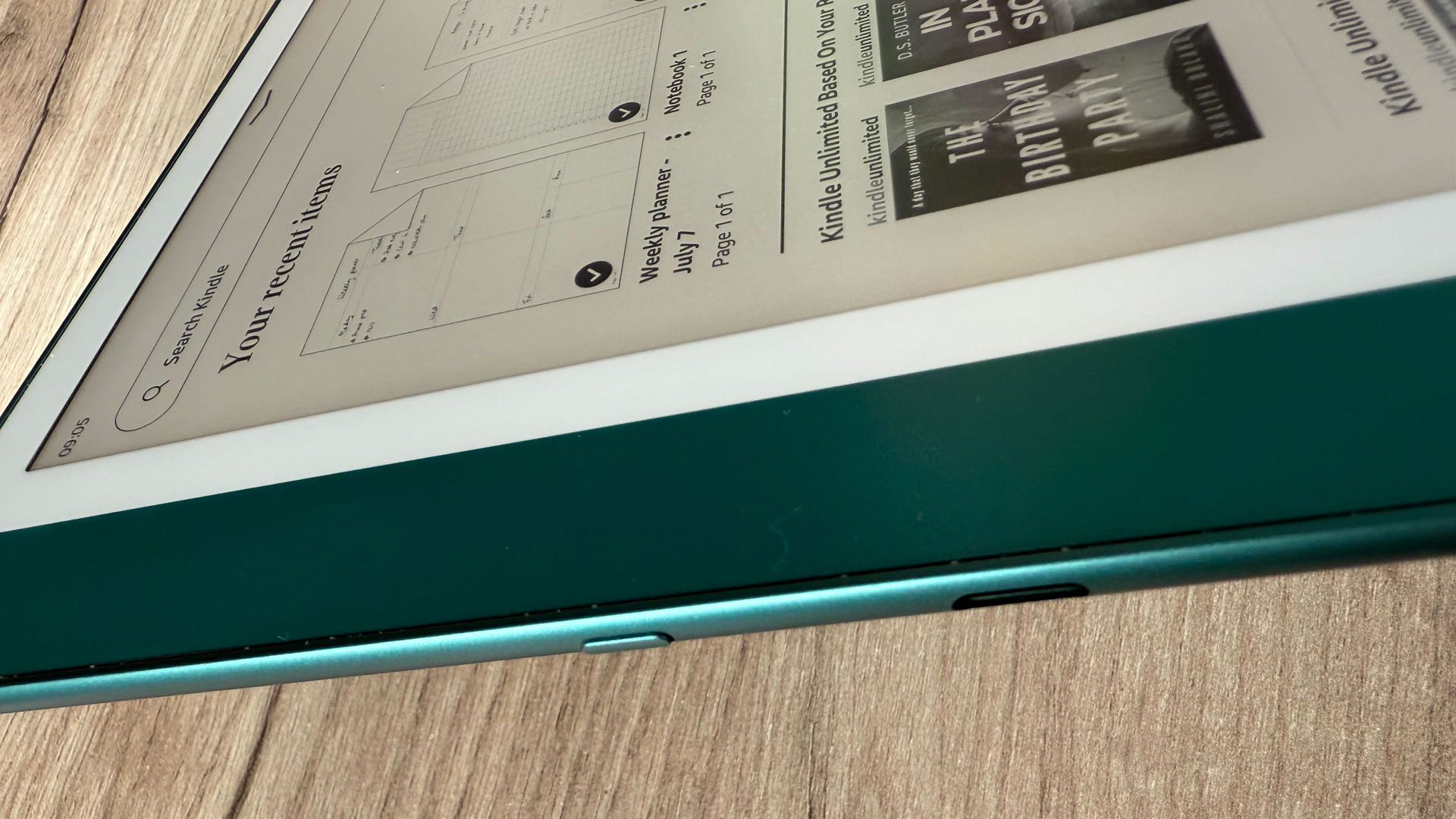
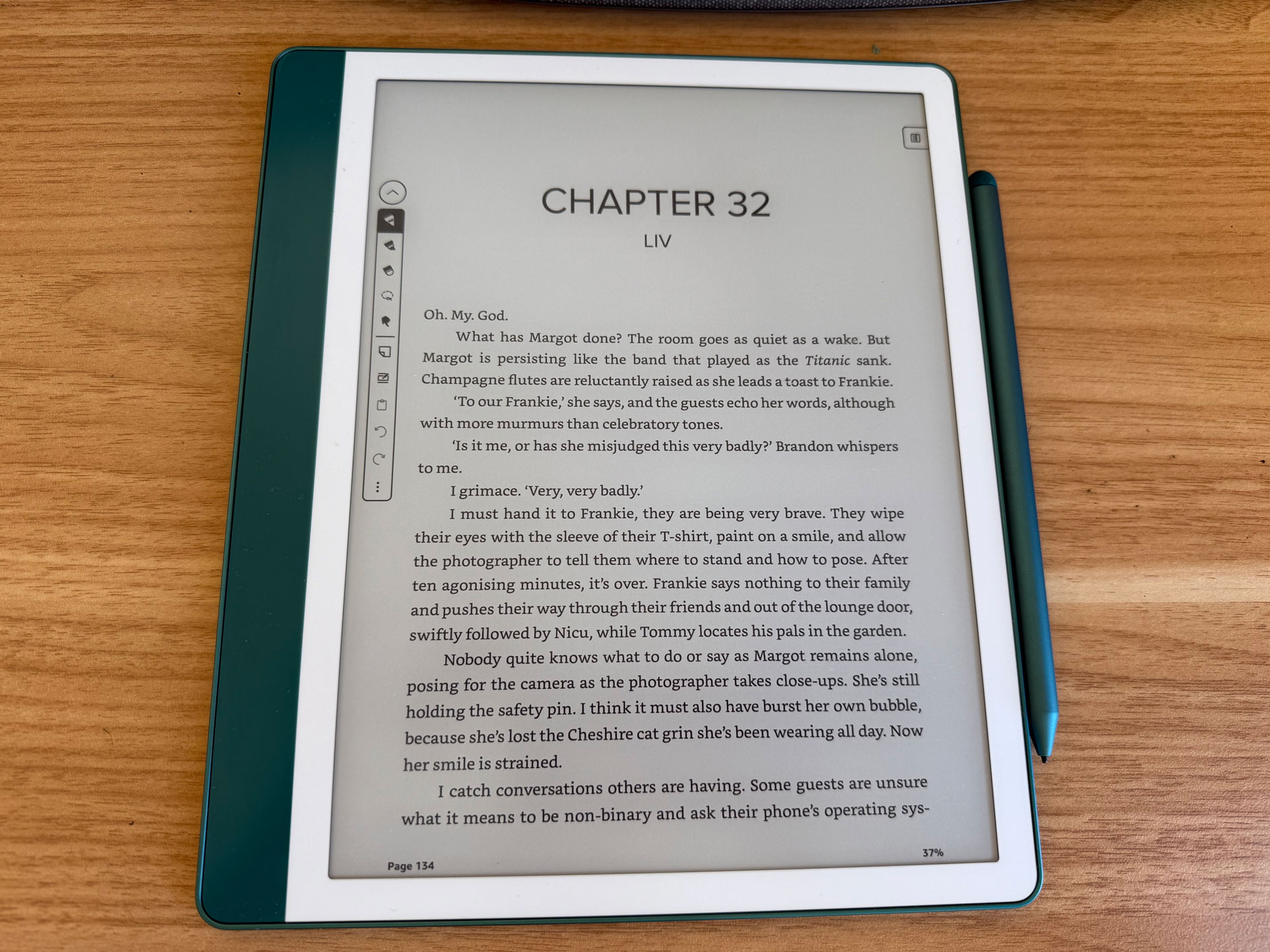
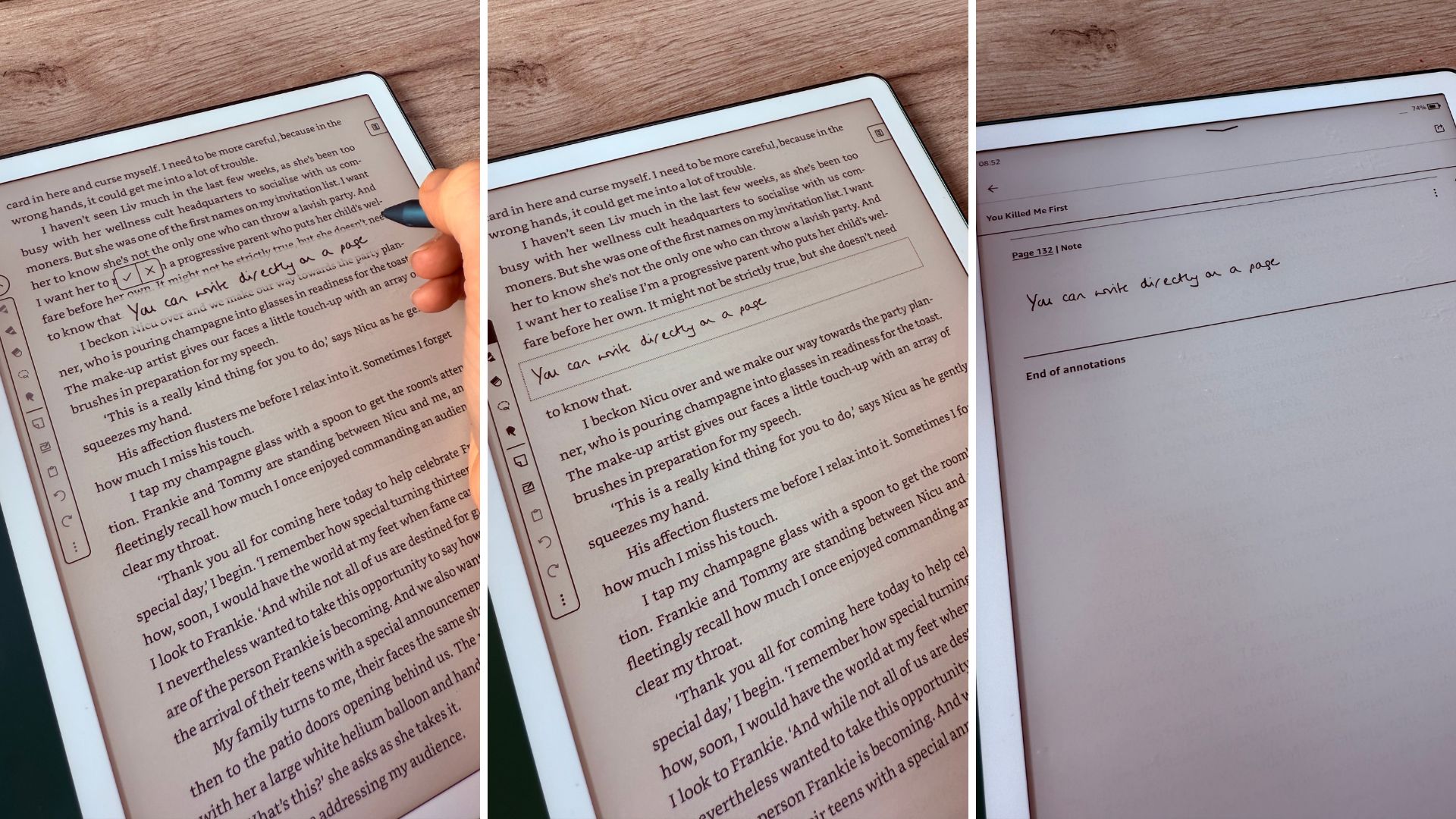
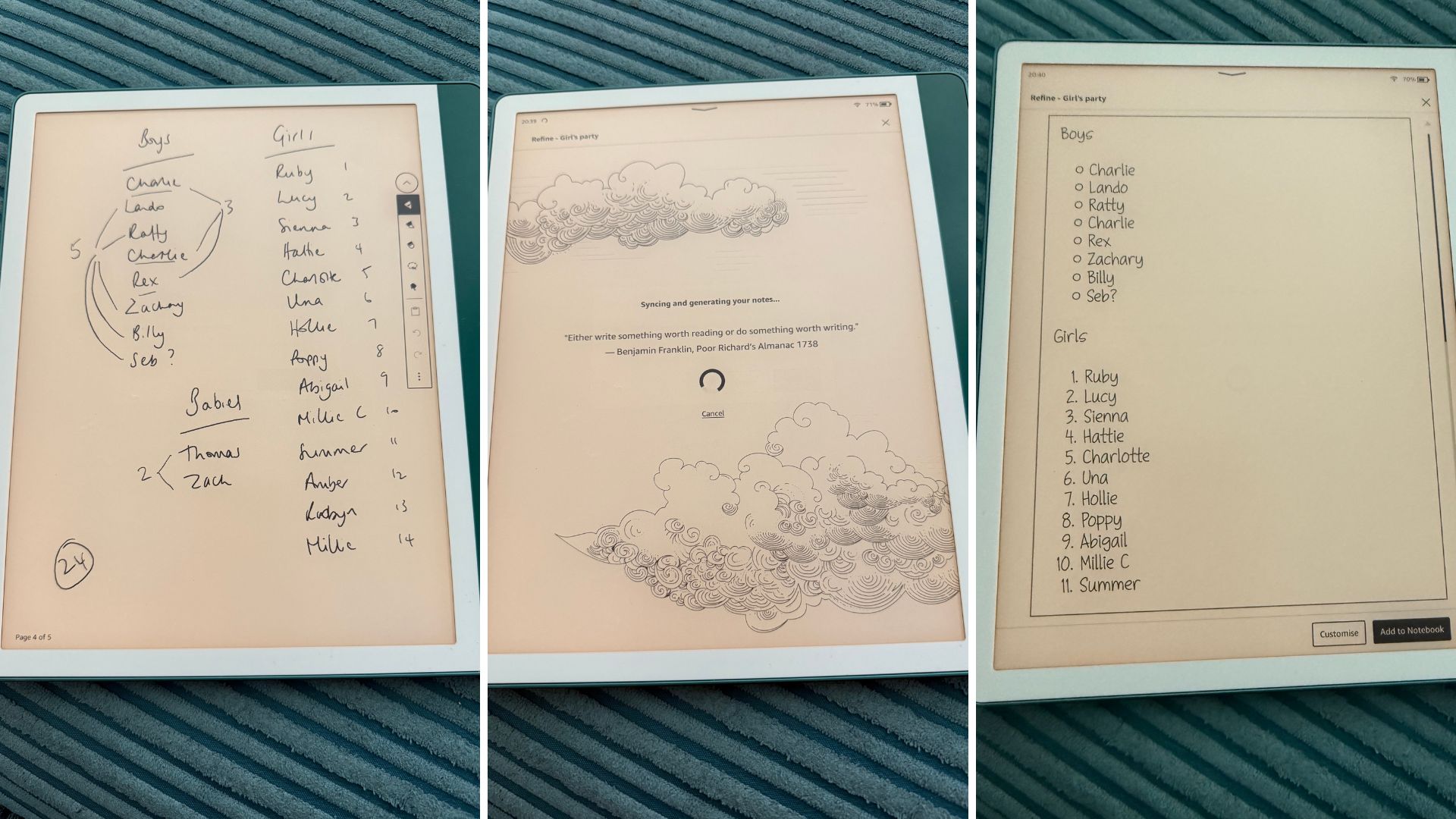
3. Amazon Kindle Scribe
Our expert review:
Specifications
Reasons to buy
Reasons to avoid
Part eReader, part digital notebook, the Kindle Scribe is perfect if you love the feel of pen on paper but still want all the convenience of an eBook. Kerrie is currently testing it for us, but Laura’s already a convert. “I’ll always be an English student at heart, scribbling in margins, underlining favourite quotes, so switching to eReaders felt a bit soulless,” she says. “The Scribe changed everything. It felt like turning over a new page.”
And that’s exactly what makes the Scribe so special. You still get access to the full Kindle Store (millions of the best eBooks, adjustable warm lighting, and that classic glare-free screen) but now with a twist. Using the included stylus, you can annotate books, jot down notes, sketch, and even doodle in spare moments. It’s brilliant for journaling, editing, or just feeling more connected to your reading.
Laura also loved how generous the 10.2-inch screen feels. It’s crisp, clear, and ideal if you like a bigger font size or wear reading glasses. In fact, her Scribe kept “mysteriously” disappearing into other family members’ hands for exactly that reason.
Yes, it’s pricier than the other Kindles, but you’re getting a two-in-one device that’s equally great for reading and writing. If you're someone who likes to annotate, brainstorm, or just prefers a big beautiful screen, the Kindle Scribe is worth every penny, especially if you can snag it in the sales.
You can find out more in Kerrie's full review.
The most premium Kindle
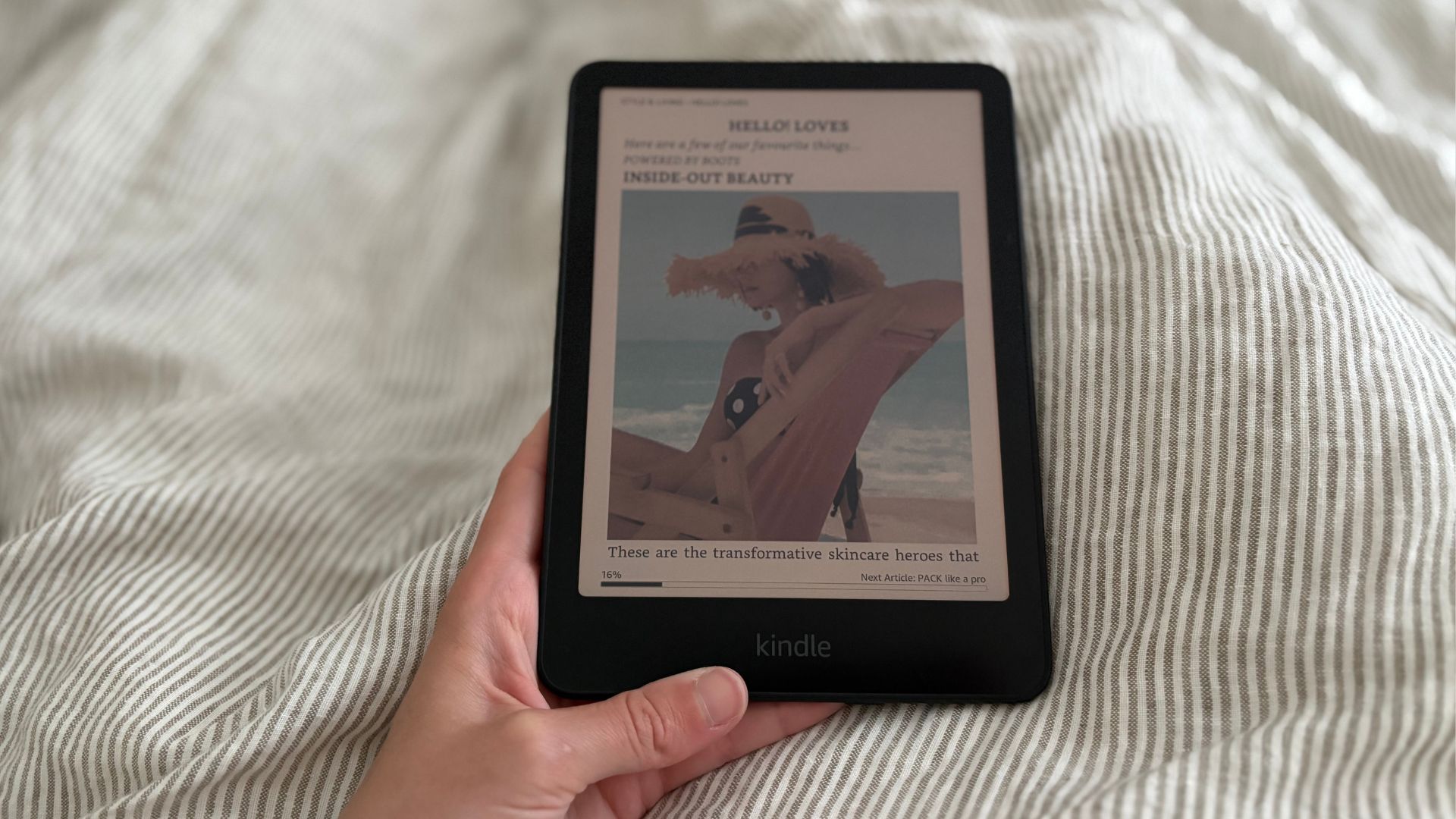
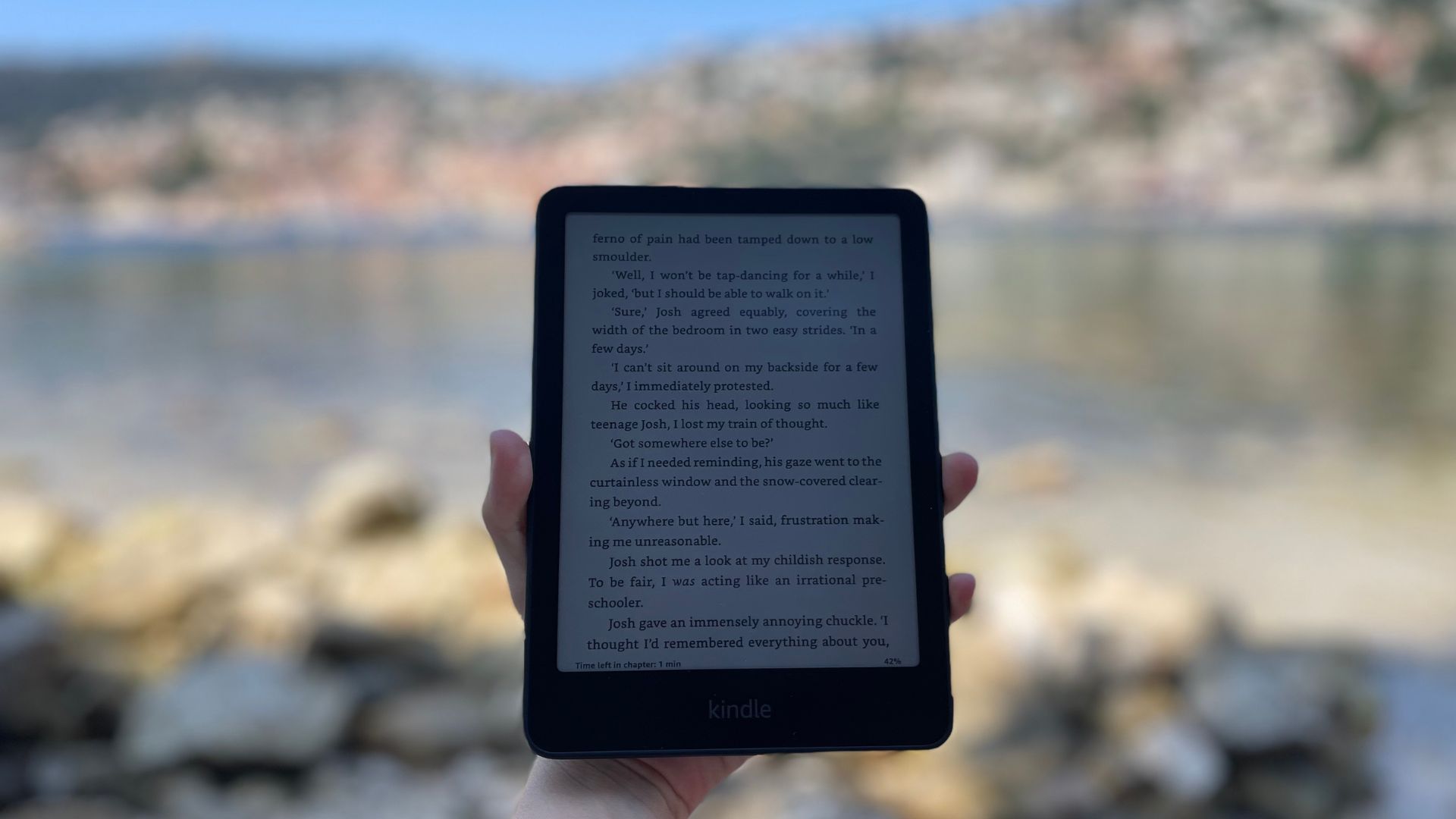
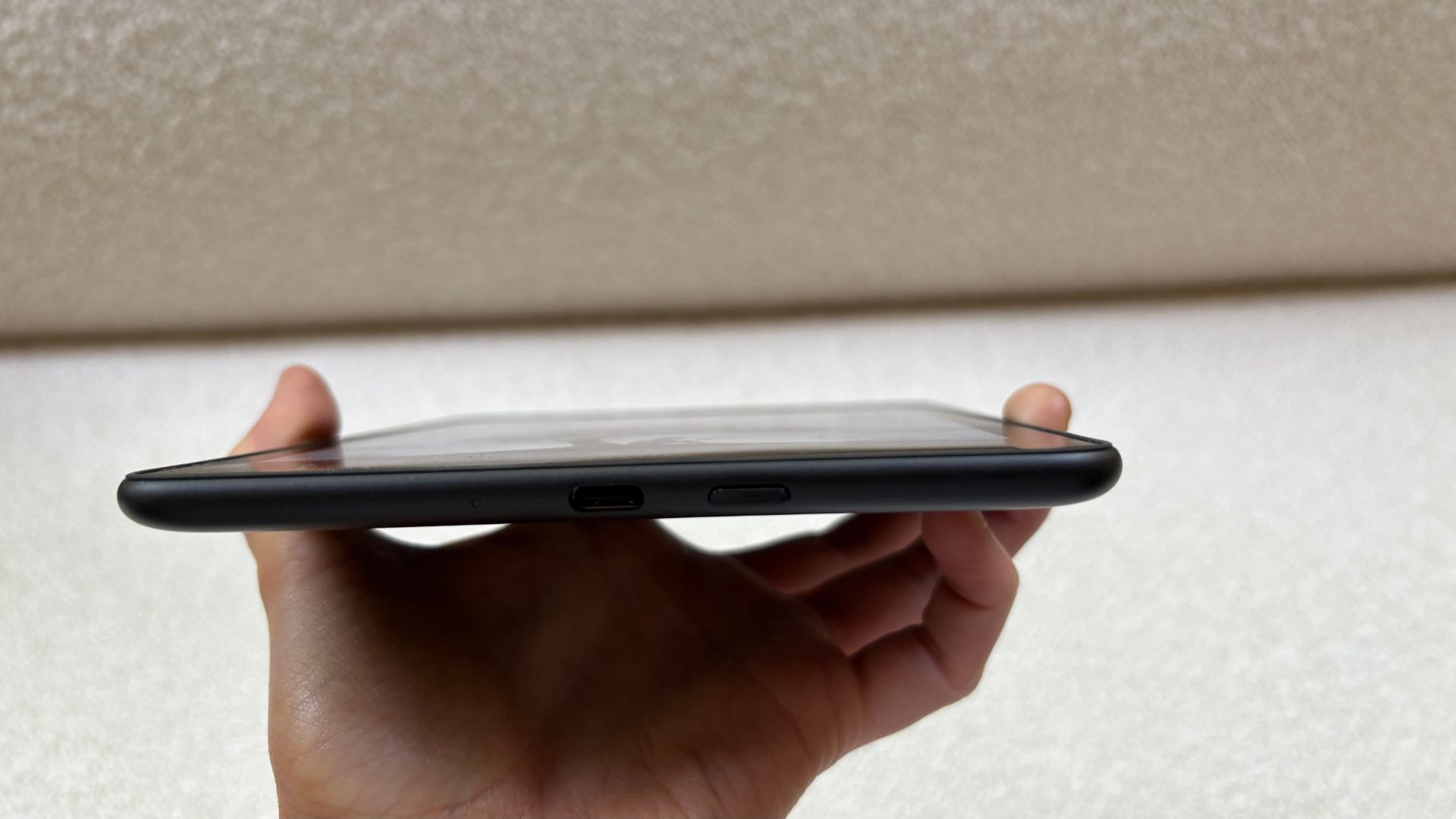
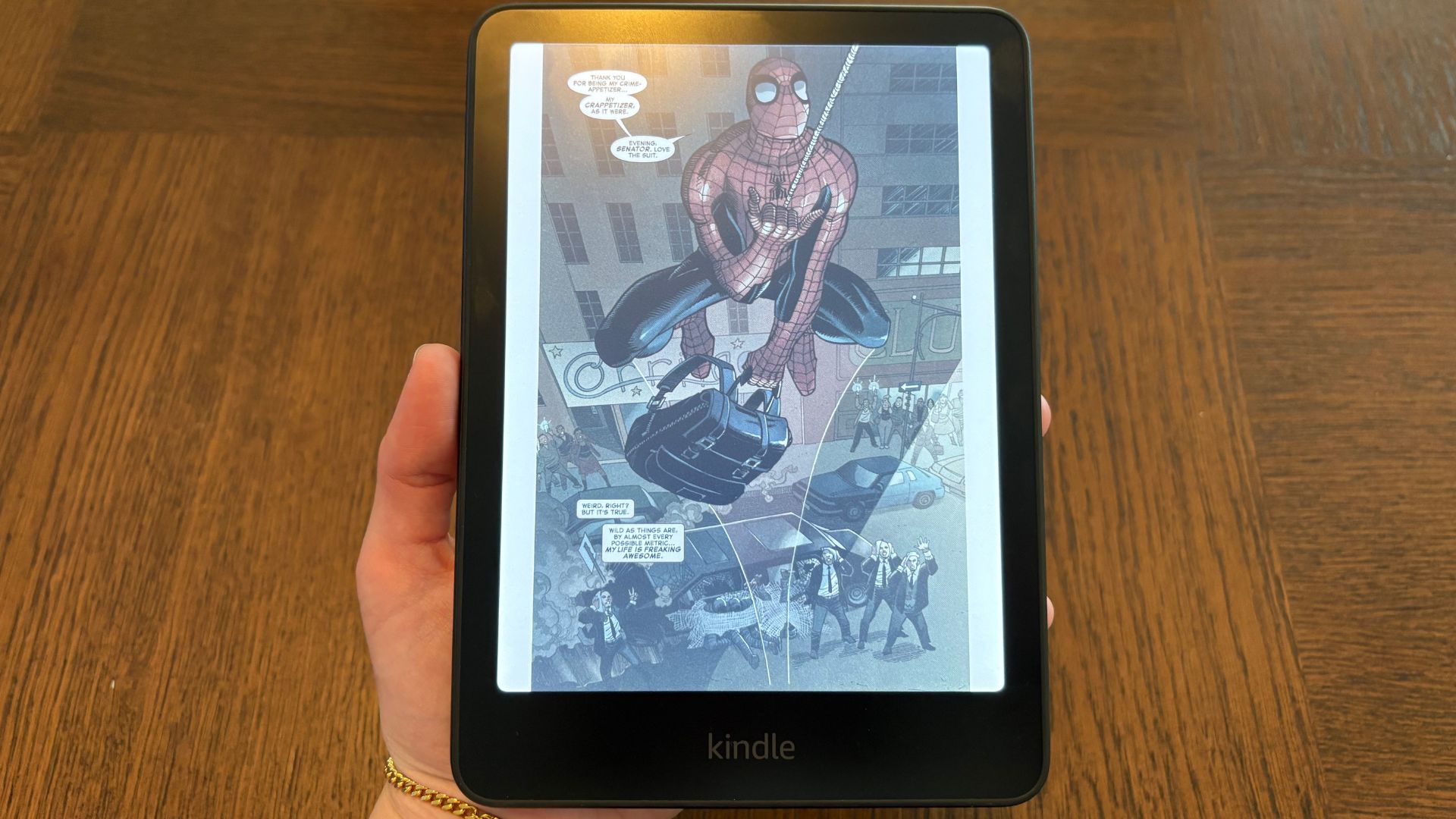
4. Kindle Colorsoft
Our expert review:
Specifications
Reasons to buy
Reasons to avoid
If you like to live life in colour, let me introduce you to the Kindle Colorsoft range. This Signature Edition is the most luxurious model that they've bought out in colour and it's the one that finally convinced me I don’t need to pack a suitcase full of books or lug hardbacks around in my handbag. This is a proper reading experience, and then some.
The seven-inch screen is a similar size to a classic paperback, yet still slips neatly into your palm or beach bag. It’s got all the bells and whistles of Kindle’s premium range (waterproofing, anti-glare display, automatic brightness and warmth controls) but with one big upgrade: colour. Whether you're flipping through a glossy magazine (woman&home, of course), browsing vibrant cookbooks in the kitchen, or reading graphic novels on your commute, the Colorsoft makes every image pop.
The screen cleverly adjusts from bright white to a soft amber hue depending on your lighting, and it really does feel like reading a high-end paperback. It’s smooth, snappy, and genuinely joyful to use, especially if your reading diet includes more than just plain text.
That said, it’s not the most budget-friendly Kindle. If you only read fiction, you might not get the full benefit of the colour upgrade, and the Kindle Paperwhite still wins on sheer value. But if you want the crème de la crème of eReaders, and love your visuals, the Colorsoft is Kindle at its most indulgent.
You can find out more in Laura's Amazon Kindle Colorsoft review
The best Kindle for children
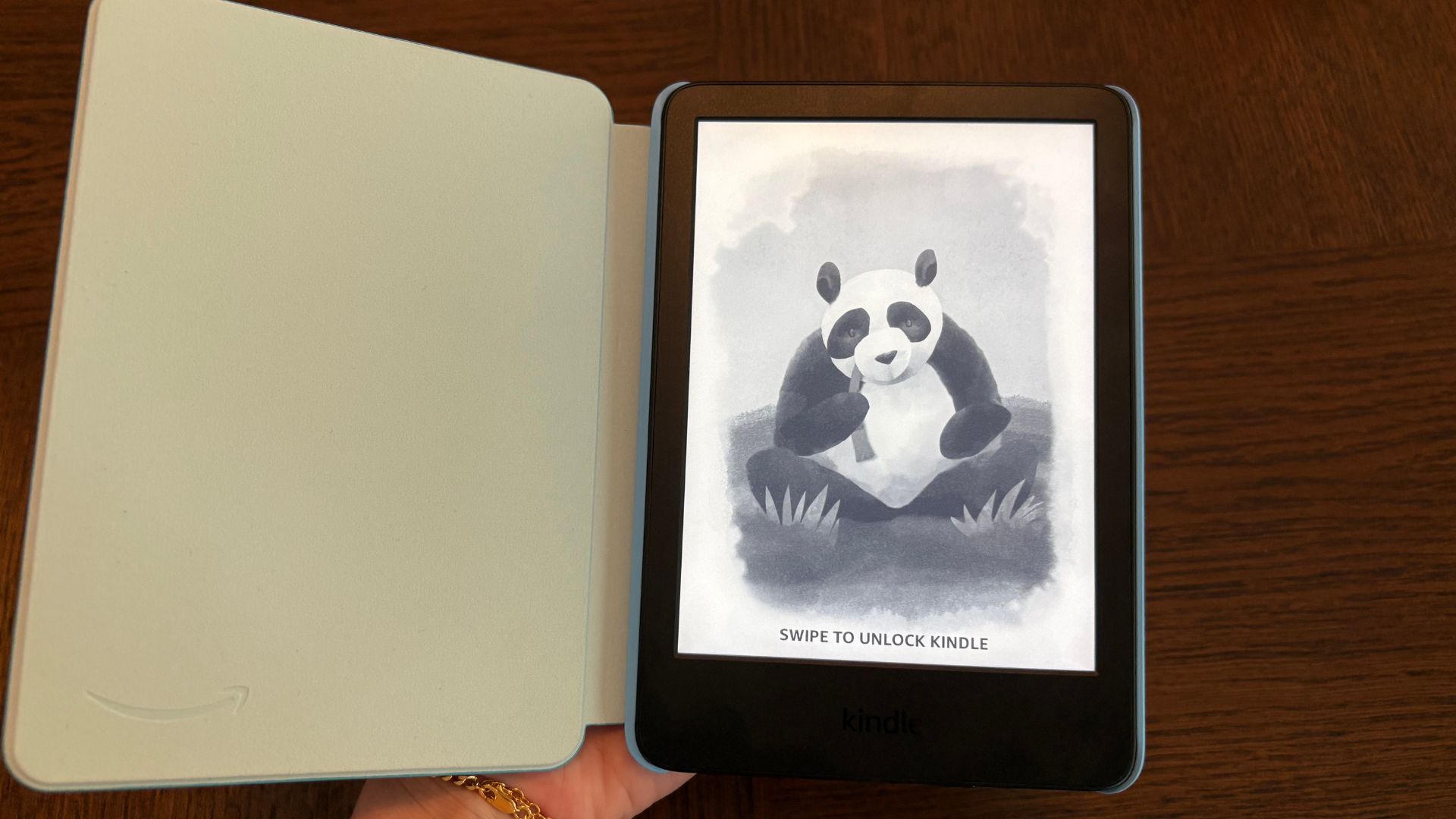
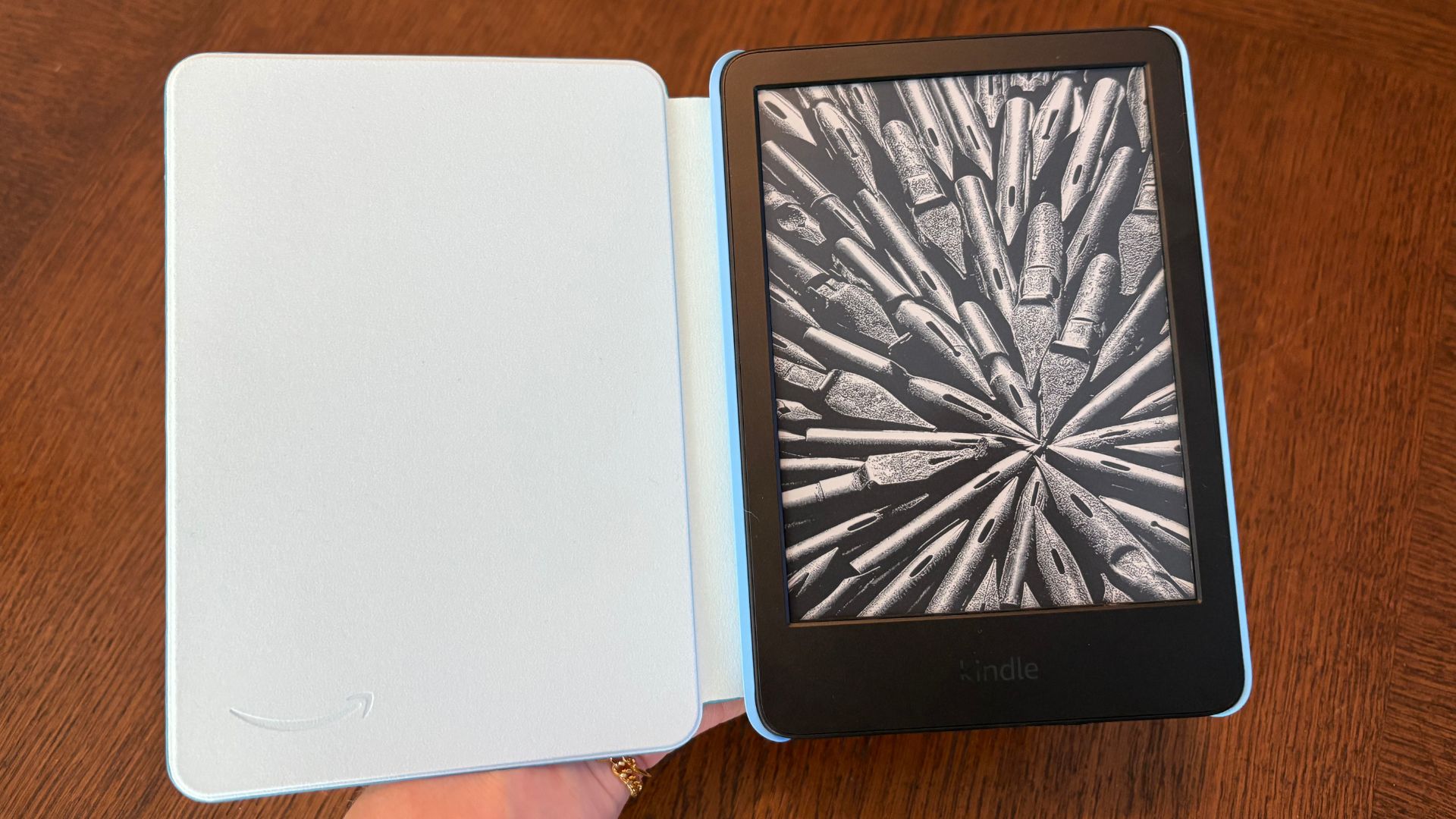
5. Amazon Kindle Kids Edition
Our expert review:
Specifications
Reasons to buy
Reasons to avoid
The name is a bit of a giveaway: this is one of the best Kindles if you're after a device for your kids. As well as coming with some funky case covers (you get to choose between Blue, Pink, Rainbow Birds, or Space Station), you also get a free year's subscription to Amazon Kids+ (usually £1.99 a month), which gives your children unlimited access to thousands of books. The final extra for this particular Kindle is the two-year warranty, which means if it should happen to break, you can get a replacement straight from Amazon, no questions asked.
There's also a parent dashboard that you can run through the Kindle app on your phone, enabling you to check up on the reading progress of your youngsters and set new challenges for them.
Essentially, beyond the dashboard, the bright colours, and the Amazon Kids+ subscription, this is actually just a standard, entry-level 10th-generation Amazon Kindle. As the Kindle Kids has increased in popularity, they've released more of a range of options. You can choose between a 6 and 6.8-inch screen and a 16-32 GB storage. There's also a back reader and everything else you would expect from a good n eReader. But a big advantage of getting one of these for your kids, rather than a tablet, is that there's no access to the web, no videos, and no social media if you'd rather keep them away from that right now.
The best Kindle for holidays
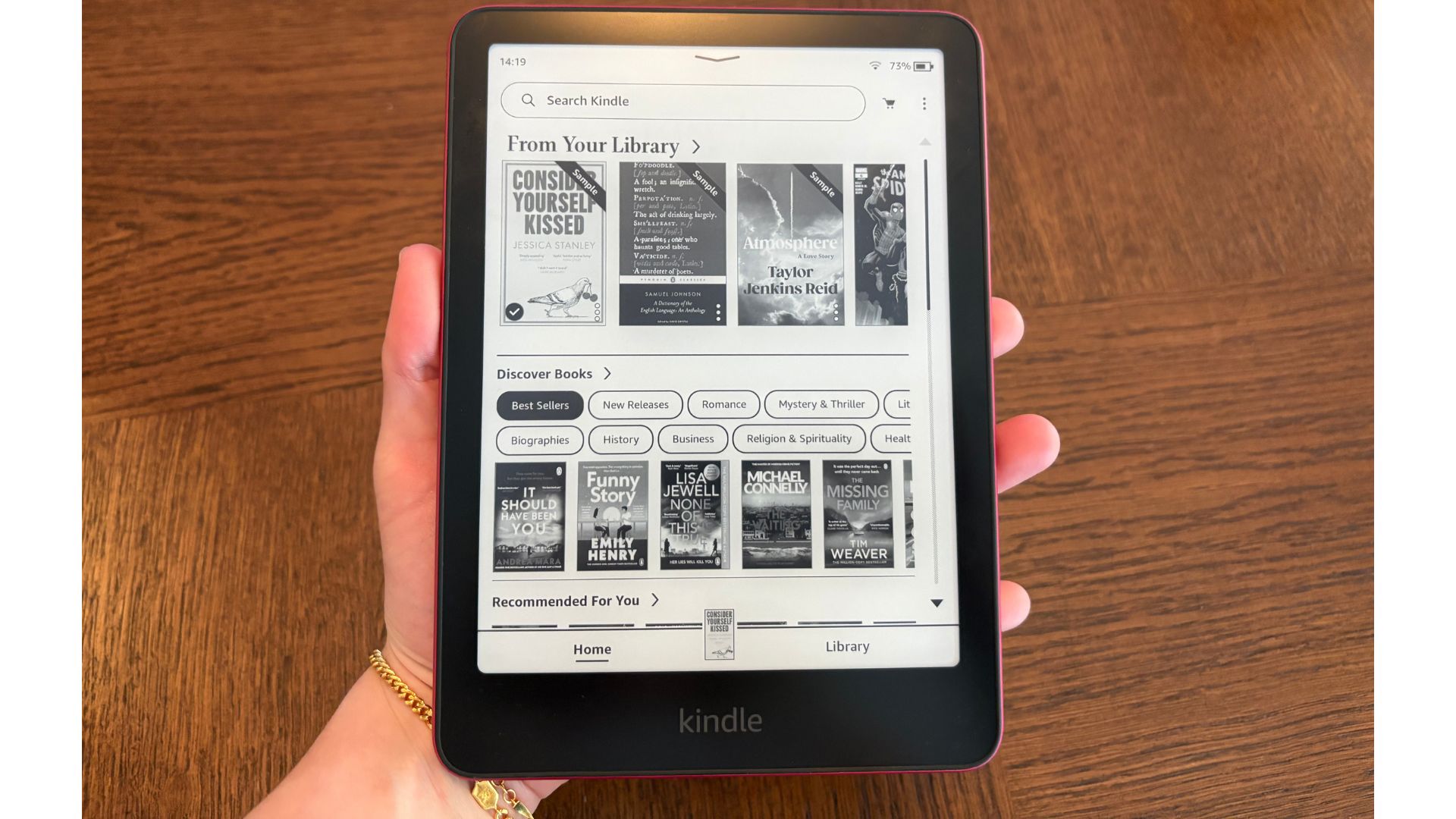

6. Kindle Paperwhite Signature Edition
Our expert review:
Specifications
Reasons to buy
Reasons to avoid
If you're anything like me, packing for a holiday means making the impossible choice of which books to bring (and hoping they don't weigh down your suitcase). That’s why the Kindle Paperwhite Signature Edition wins the award for being the ultimate travel buddy. It has all the features of the regular Paperwhite, but with a few luxe extras that make it feel just that little bit more special.
First things first: the 32GB storage. It holds thousands of books, so whether you’re a beach-read binger or someone who finally tackles that chunky classic on holiday, you’re covered. The screen is crisp and glare-free, even in bright sunshine (goodbye squinting by the pool), and the adjustable warm light makes late-night reading a dream.
I also love that it charges wirelessly: just pop it on a Qi pad and forget about fiddly cables. The battery life is incredible too; mine lasts for weeks, so there's no need to stress about running out of juice mid-chapter while sunbathing. And if you get caught in a sudden rain shower, no worries. It’s fully waterproof.
It’s not the cheapest Kindle, but for something you’ll use every day on holiday and at home, the Signature Edition feels worth the extra £40. It’s lightweight, sleek, and makes reading on the go feel effortless. Basically, it’s like taking a mini-library on your travels, without sacrificing space for that extra pair of sandals.
The best Kindle alternatives
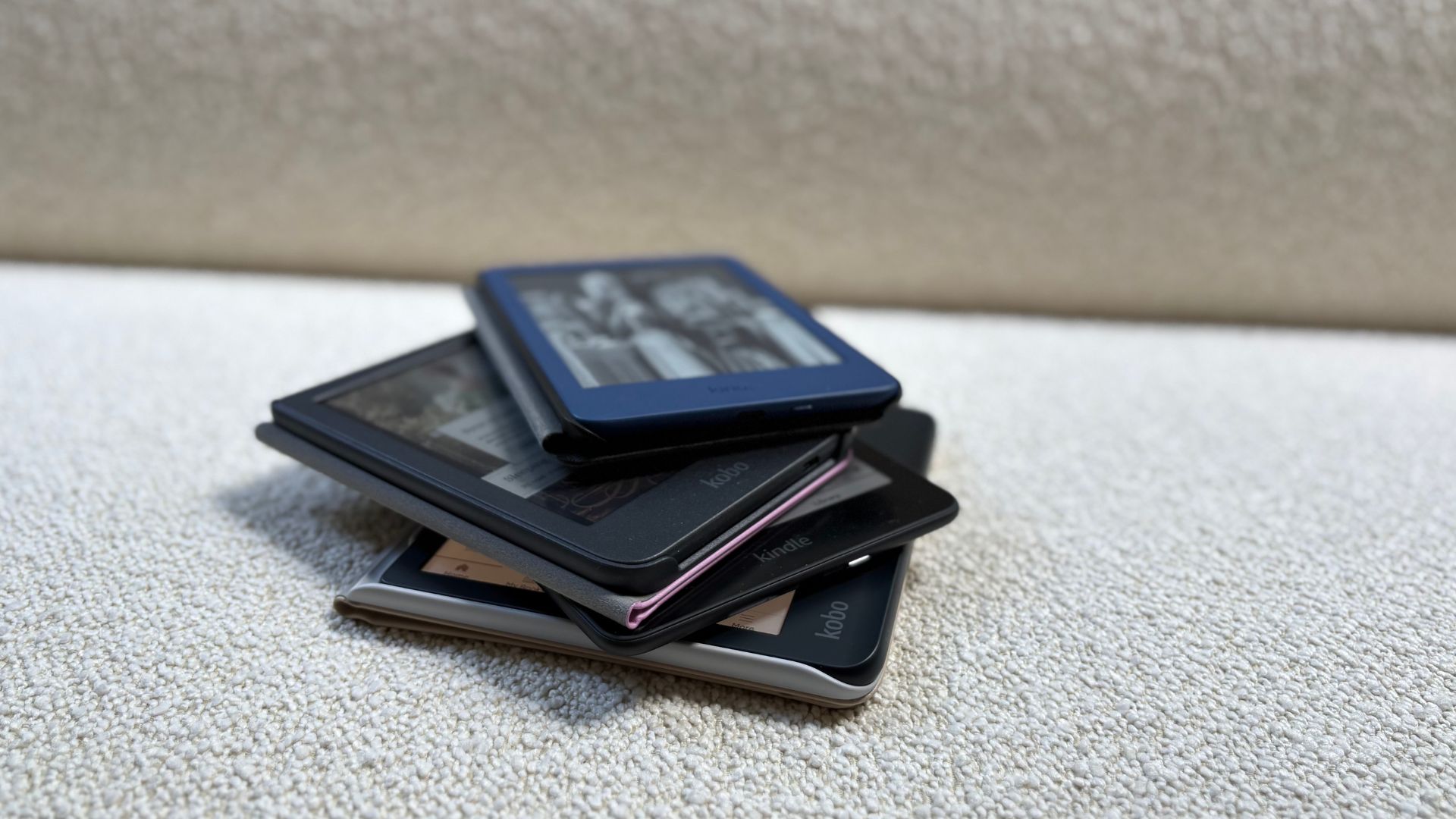
If you like the idea of a Kindle, but you're wondering what else is out there, I have a few other tried-and-tested e-readers that I'd recommend. Kobo makes some of the most competitive e-readers when you put them head-to-head with Kindles. Plus, Amazon's Fire borrows all the Kindle technology and blends it with a more classic tablet.
I think Kindles are the best e-readers that you can buy, but these are worth considering too.
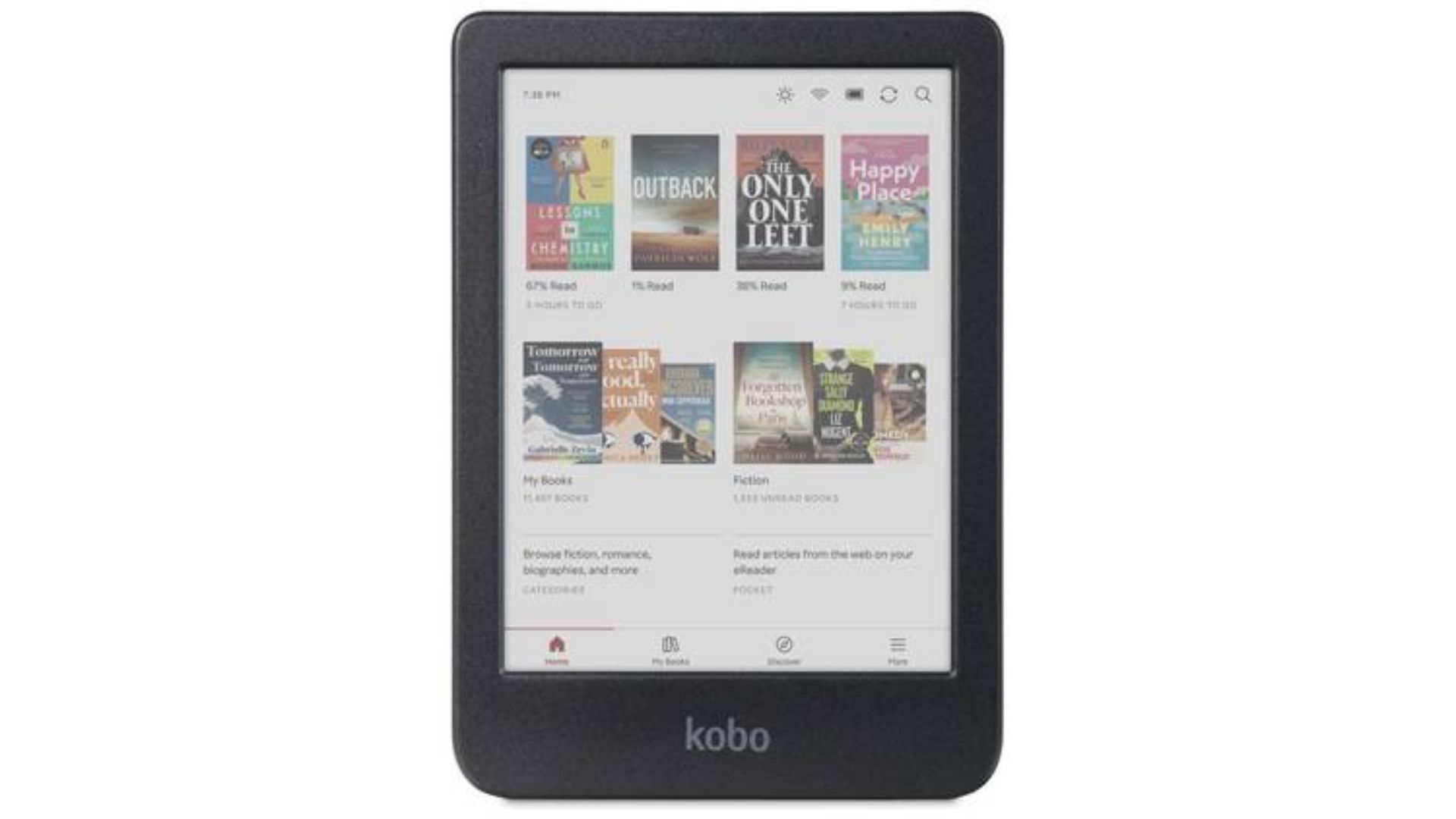
This is a pared-back tablet that's slim and textured. It weighs 39g less than the Kindle Paperwhite and even slotted into a large pocket of my denim jacket. It has a colour screen, 6 weeks worth of battery, a night-mode, clever light control, and WiFi Connectivity. The only downside is that the screen is only 6 inches, which could make reading tricky for some.
See my full Kobo Clara Colour review
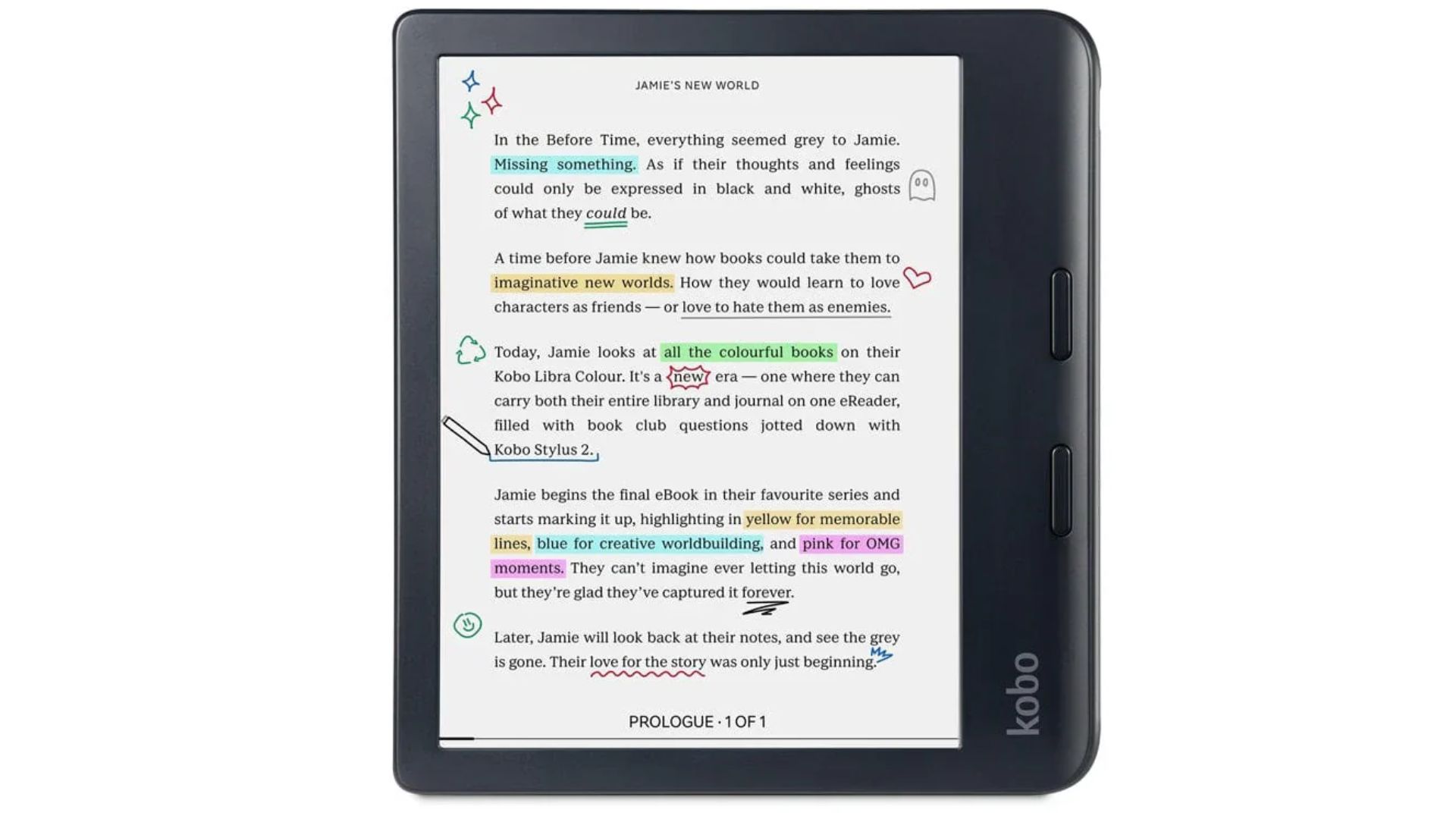
Kobo comes hot on the heels of the Kindle. It can withstand up to an hour submerged under water, so you can use it safe in the knowledge that it'll survive bath time naps. The Libra Colour combines the Scribe's interactive screen, allowing you to take notes as you read with the Colorsoft's display, as this lets you highlight and read with vivid colours. It even has the page turn buttons that we lost when the Kindle Oasis was discontinued.
See my full Kobo Libra Colour review
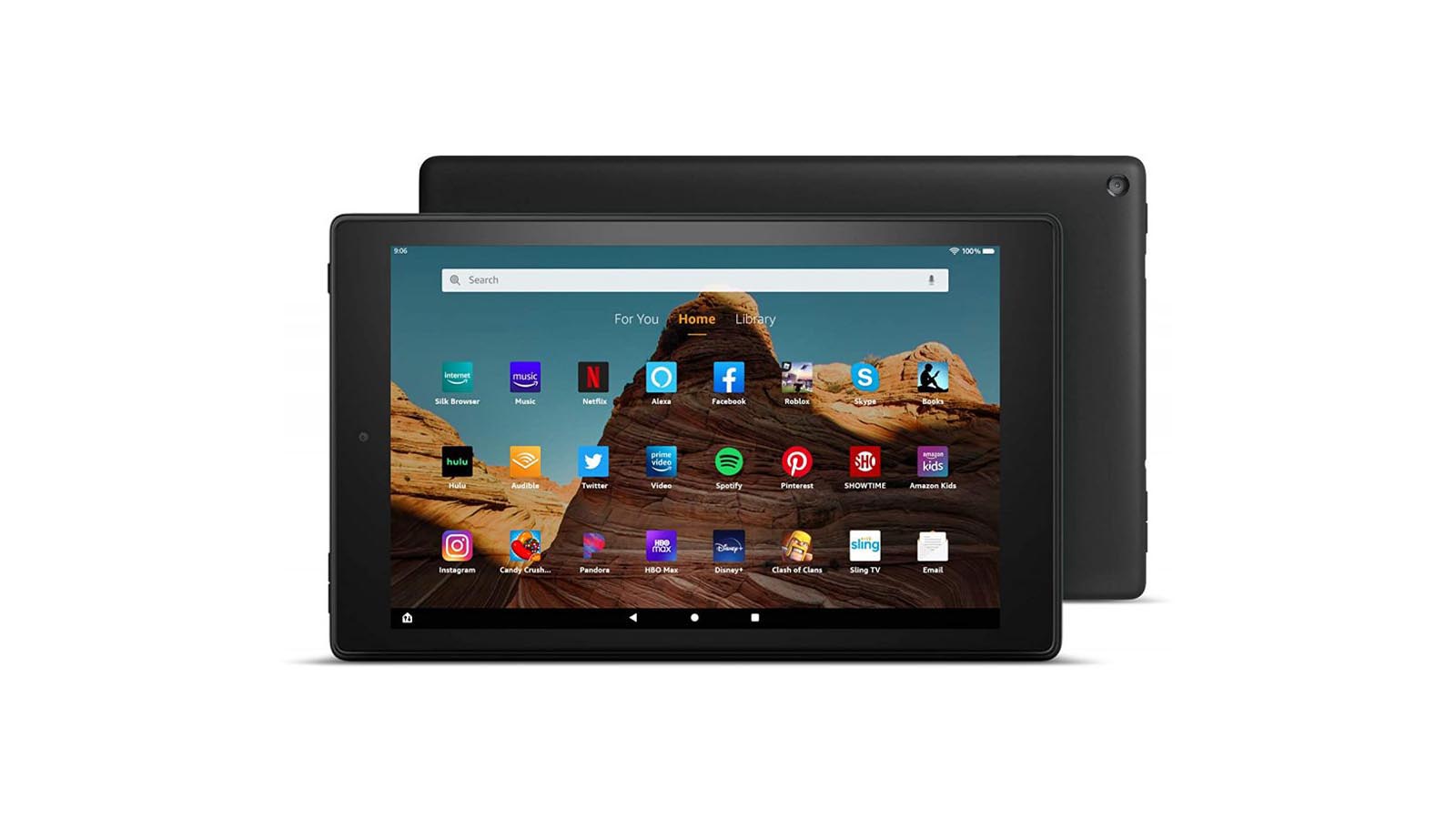
This isn't technically a Kindle, which is why we have it as an alternative option. You can read and download your favourite eBooks on the Kindle app, but you can also download other apps that let you shop, browse the web, play games, and watch TV. It has a shorter battery life than Kindles and isn't as useful without the internet, but it's a good tablet nonetheless.
How to choose the right Kindle for you
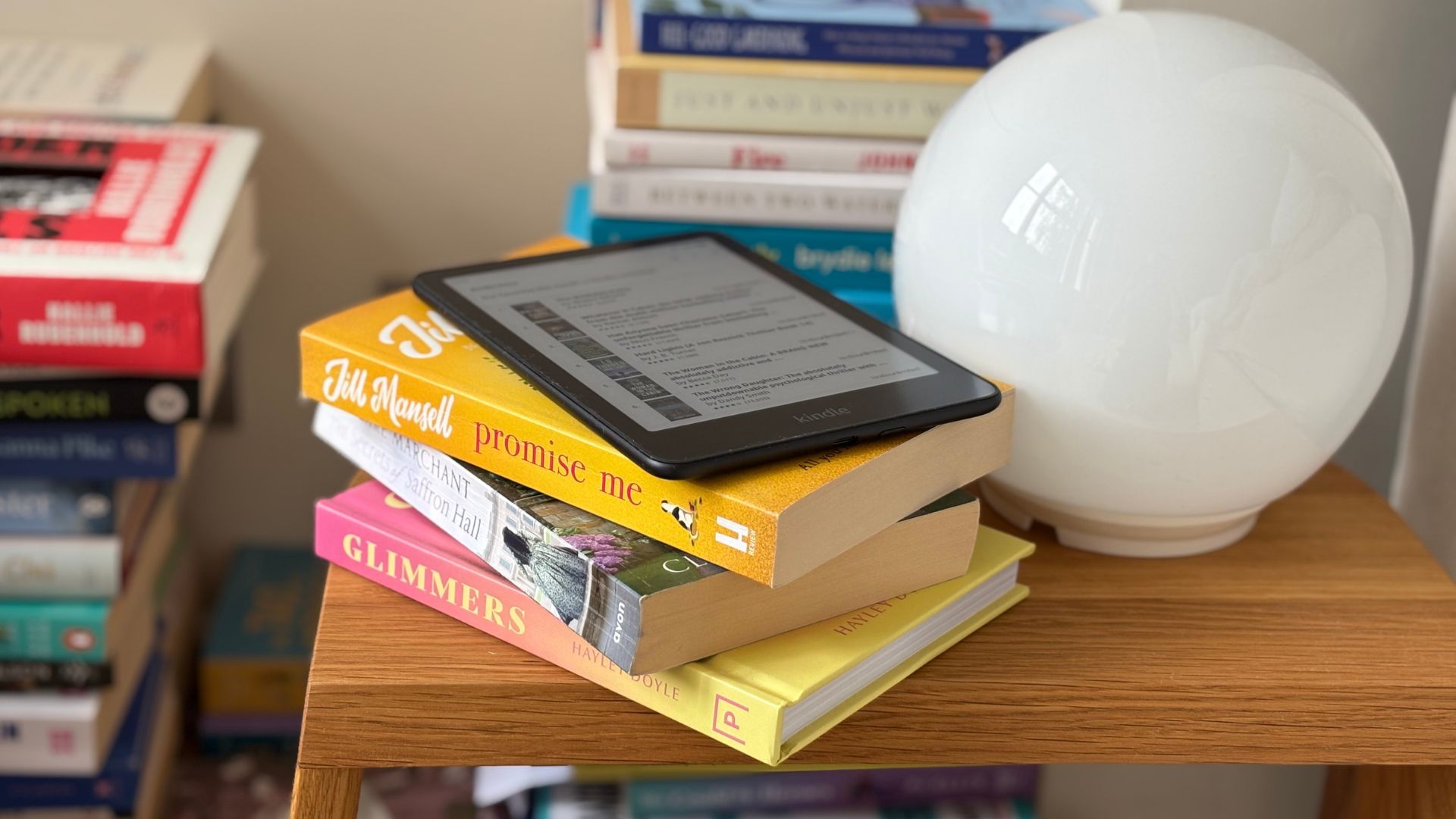
Not sure where to start? Don’t worry. You’re not alone! With so many models to choose from, picking the right Kindle can feel a bit overwhelming. But once you think about how you like to read, things start to fall into place. Here are a few things to help you decide:
- How you’ll use it: Think about when and where you’ll be reading. If you love reading in bed at night, the Paperwhite models are perfect; their adjustable warm lighting is much gentler on tired eyes. If you’re someone who likes to scribble notes, journal, or doodle, the Kindle Scribe doubles as a notepad too.
- Screen size matters: You can change the text size, but the actual screen size still makes a difference. The Paperwhite’s 6.8-inch screen is a lovely in-between, easy to hold in one hand, with plenty of words per page. The smallest screen is 6 inches, and the biggest (on the Scribe) is a roomy 10.2 inches, great if you prefer larger text or use reading glasses.
- Storage space: Most Kindles now come with 16GB as standard, which is loads for books. But if you're into magazines, audiobooks, or large PDFs, look for models with more storage, like the Paperwhite Signature Edition or Scribe.
- Battery and charging: Most Kindles last weeks on a single charge (dreamy, right?). The Signature Edition even charges wirelessly, so no fiddly cables.
- Extras to consider: Waterproofing, colour options, screen colour options, these little extras might not seem essential, but they can make all the difference.
- Budget: There’s a Kindle for every price point, from the super affordable Amazon Kindle (under £100) to the all-singing, all-dancing Scribe. It all depends on what matters most to you.
Still stuck? Don’t worry. I’ve made a table below comparing each model so you can find your perfect match at a glance:
| Header Cell - Column 0 | Weight | Screen size | Screen type | Storage | Resolution | Battery life | Waterproof | WiFi | Backlights | Adjustable warm light |
|---|---|---|---|---|---|---|---|---|---|---|
Kindle Paperwhite Signature | 208 g | 6.8 inches | E Ink Carta 1200 | 32 GB | 300 ppi | Up to 10 weeks w/ wireless charging | Yes | Yes | 17 LEDs | Yes |
Amazon Kindle | 158 g | 6 inches | E Ink | 16 GB | 300 ppi | Up to 6 weeks | No | Yes | 4 LEDs | No |
Kindle Colorsoft | 219 g | 7 inches | E Ink Kaleido 3 | 32 GB | 300 ppi | Up to 6 weeks | Yes | Yes | 25 LEDs | Yes |
Kindle Paperwhite | 205 g | 6.8 inches | E Ink Carta 1200 | 8/16 GB | 300 ppi | Up to 10 weeks | Yes | Yes | 17 LEDs | Yes |
Kindle Kids | 289 g | 6 inches | E Ink | 8 GB | 300 ppi | Up to 4 weeks | Yes | Yes | 17 LEDs | No |
Kindle Scribe | 443 g | 10.2 inches | E Ink Carta 1200 | 16/32 GB | 300 ppi | Up to 12 weeks | No | Yes | 35 LEDs | Yes |
How we tested these Kindles
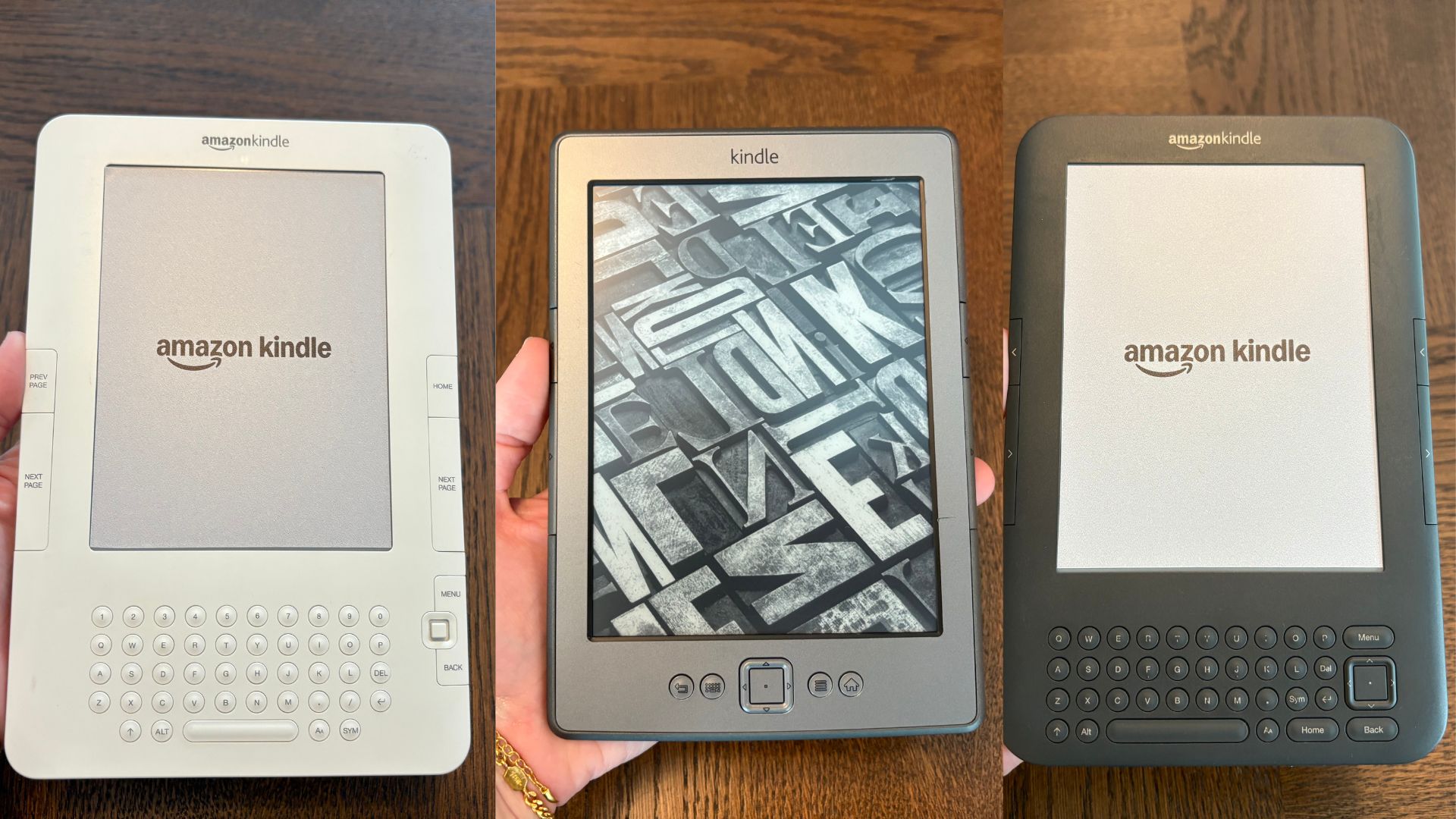
If you need evidence of my commitment to Kindles, here are some seriously retro models. You actually can't even buy these any more. A lot can change in two decades.
At woman&home, we take our Kindle testing seriously, because we know how important it is to find the right eReader for you. Whether you’re a once-a-year holiday reader or someone who flies through three books a week, we want to make sure the model you pick truly fits your reading life.
Our in-house experts (hello, book lovers) keep a constant eye on the latest Kindle launches, calling in new models the moment they hit the market. From there, we start our hands-on testing, beginning with the unboxing. Is the packaging eco-friendly? Is it easy to get started? Does it feel like something you’ll want to hold every day?
Once we’ve got a Kindle set up, we test everything: screen quality, lighting, storage, size, battery life, and extra features like waterproofing or Bluetooth for audiobooks. We read in the morning and at night, in bright sunshine and total darkness, on commutes, holidays, and even while walking around the house (yes, really). The goal is to see what it’s actually like to live with a Kindle, not just use it for five minutes.
And when it comes to who’s doing the testing, that would be me, David Nield (a tech journalist), and Kerrie Hughes (our Editor). I’ve used Kindles for over a decade (since 2012) and tested every Kindle and Kobo model you'll see. I studied English at Oxford, I read on the cross-trainer at the gym, and I usually finish 6–7 books a week. Basically, I don’t just love reading, I rely on it.
So when I review a Kindle, I’m thinking like a real reader. I’m weighing up whether it’s worth your money, who it would suit, and whether the fancy features actually make a difference. Once I’ve put it through its paces, I compare it against the rest of the Kindle family and make sure everything is easy to understand, so you know exactly what you’re getting.
Because when you finally unwrap your Kindle, we want it to be love at first read.
FAQs
Has the Kindle Oasis been discontinued?
I'm sorry to be the breaker of bad news, but yes, the Kindle Oasis has been discontinued. The good news is, I have found an alternative that I actually think is better. The Kobo Libra Colour has the Kindle Oasis' page-turn buttons, but it also comes with a colour screen and it will let you annotate and draw on the pages too. The best bit is that it's cheaper too. Thank me later.
Which Kindle is the best for aging eyes?
The Kindle Scribe is one of the best options for aging eyes thanks to its large 10.2-inch screen, adjustable warm light, and the ability to enlarge text without feeling cramped. If you're after something more compact, the Kindle Paperwhite also offers crisp contrast and customizable font sizes in a more handbag-friendly size.
What can you do on a Kindle besides read books?
A Kindle's primary use is to read books on: books downloaded from the Amazon library.
But can a Kindle do anything else? Yes, in fact, there are a number of other functions your Kindle can perform to become a multi-functional device. As well as reading books, a Kindle will also allow you to listen to audiobooks and to read magazines, so long as you are subscribed. On many Kindles, you can also play games and use apps, via the Kindle store.
You can also browse the web on a small amount of the Amazon devices. The Kindle and the Kindle Paperwhite have a limited capability for internet browsing should you want it, but it's worth noting that they don't support colour or any other multi-media you might find on the internet.
Finally, you can also send and store personal documents via a Kindle. When you set up your device you'll receive your own (new) personal email address, allowing you to upload documents such as PDF's to it, which can be particularly handy if you need to work whilst traveling.
Are Kindle books free?
Technically, no. While there are some free eBooks, most eBooks have to be paid for it in the same way you would pay for a physical book. However, eBooks for a Kindle generally do cost much less than physical books, so there is a saving to be had.
But there is a way to pay much less for your eBooks if you download lots of them each month. You could use Kindle's subscription service, Kindle Unlimited. On Kindle Unlimited, you get 30 days of free digital books, after which you will pay £9.95 a month, which will allow you to download as many eBooks as you want.
Is Kindle Unlimited worth it?
I have a whole page dedicated to the question "is Kindle Unlimited worth it?" Right now, new users get a free three month trial, so you have nothing to lose. Going forward from that, Kindle Unlimited's subscription service is a monthly cost of nearly £10. But given that one new e-book might cost you £4, it can mean a fantastic saving. And with books, magazines and audiobooks all available with Kindle Unlimited, we think it's well worth looking into.
That being said, if you're a lover of the newest releases then you might not find many of these on Kindle Unlimited. However, the service does often provide a few gems—especially when it comes to best thriller books, the best romance books, or the best historical fiction books.
Overall, if you're a book-lover we reckon Kindle Unlimited is well worth trying. However, it may not provide value-for-money if you tend to buy only one book a month, or less.
Can I use a Kindle without Wi-Fi?
Yes, you can read downloaded books without Wi-Fi, so you're free to read anywhere: plane, beach, or bath. However, you’ll need a Wi-Fi connection to buy or download new books .
Do all Kindles support audiobooks?
All current Kindle models support audiobooks via Audible, but you’ll need Bluetooth headphones or a speaker to listen. Just be aware that Kindles don’t have built-in speakers or headphone jacks.
Are Kindles waterproof?
Most Kindles aren’t, but the Paperwhite, Paperwhite Signature Edition, and Colorsoft all come with waterproofing (IPX8 rated). That means they’re safe to use by the pool or in the bath, ideal for holiday reading.
How much storage do I really need on a Kindle?
For most readers, 16GB is more than enough. You can fit thousands of books on that alone. You’ll only need to upgrade to 32GB or 64GB if you're planning to store lots of audiobooks, PDFs, or graphic-heavy files like comics or cookbooks.
Can I read library books on a Kindle?
It depends where you live. In the UK, Kindle doesn’t support library borrowing, but in the US, you can borrow eBooks via Libby or OverDrive on most Kindle models.
How long does a Kindle battery last?
Battery life varies by model, but most Kindles last up to 6–10 weeks on a single charge with regular use. That’s one of the biggest perks of eReaders compared to tablets or phones.
Do Kindles come in colour?
Most Kindles still use black-and-white screens, but the Kindle Colorsoft introduced a vibrant, full-colour e-ink display. It’s perfect for reading graphic novels, cookbooks, or magazines without compromising on eye comfort.
Can I use a Kindle for PDFs and note taking?
Yes, especially if you choose the Kindle Scribe, which is designed with a stylus for notes, mark-ups, and annotations. It handles PDFs better than other Kindles, but if you're working with complex documents, it’s still a bit limited compared to an iPad or tablet.
How often does Kindle launch a new model? Should I wait for a new one?
Amazon typically releases new Kindle models every couple of years, but major upgrades don’t happen too frequently. If the model you're eyeing is newly released or was updated within the last year, it’s a great time to buy.
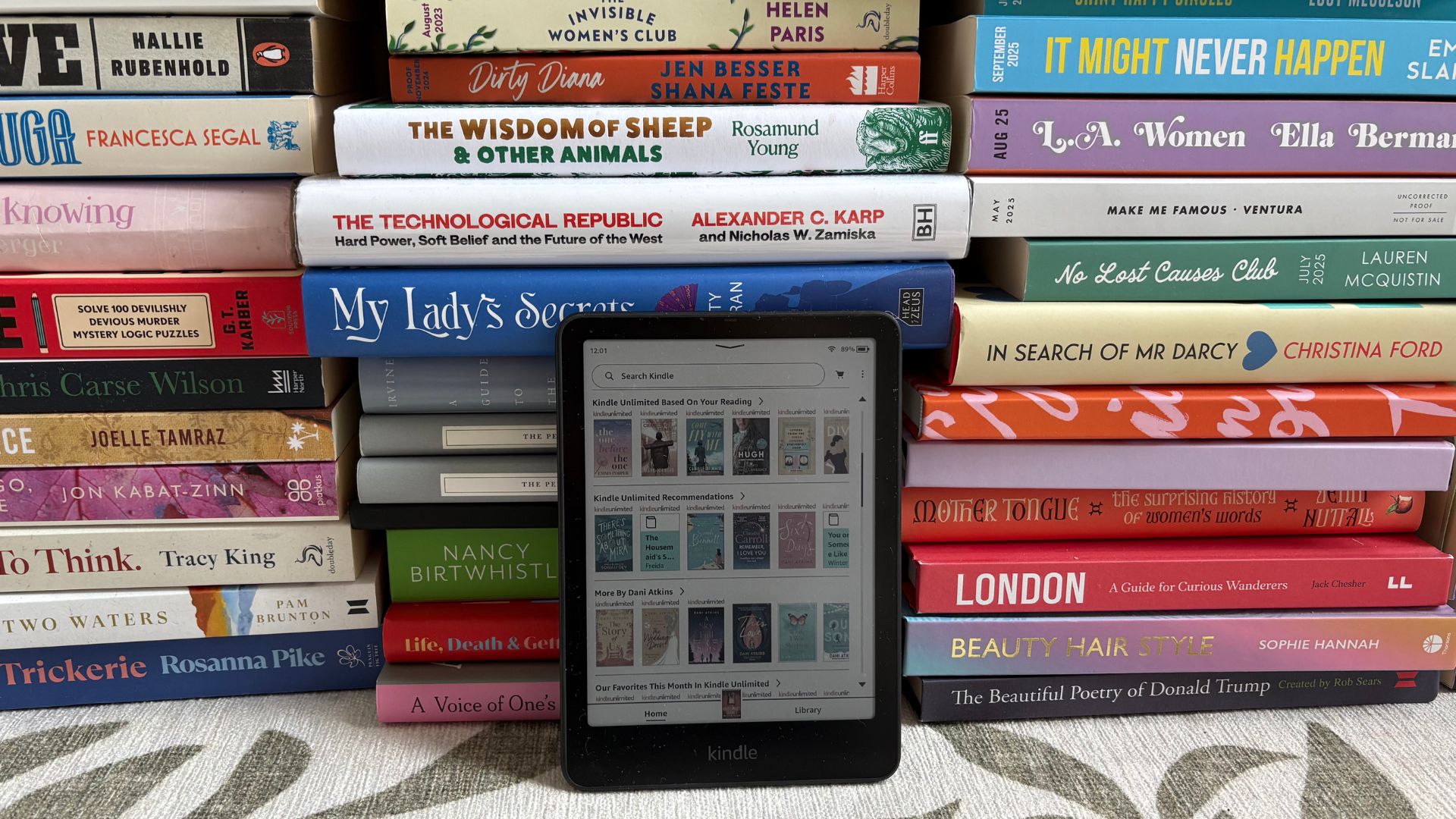
I hope that's helped all those who are curious about delving into the world of Kindles and eReaders to find out more. If you're still stuck, don't hesitate to send me an email. You can always find me curled up with a Kindle and a cup of coffee.
Sign up to our free daily email for the latest royal and entertainment news, interesting opinion, expert advice on styling and beauty trends, and no-nonsense guides to the health and wellness questions you want answered.

Laura is woman&home's eCommerce editor, in charge of testing, reviewing and creating buying guides for the Homes section, so you'll usually see her testing everything from the best dehumidifiers to sizing up the latest Le Cruset pot. Previously, she was eCommerce editor at Homes & Gardens magazine, where she specialised in covering coffee and product content, looking for pieces tailored for timelessness. The secret to her heart is both simplicity and quality. She is also a qualified Master Perfumer and holds an English degree from Oxford University. Her first editorial job was as Fashion writer for The White Company.
